Ithriya اثريا
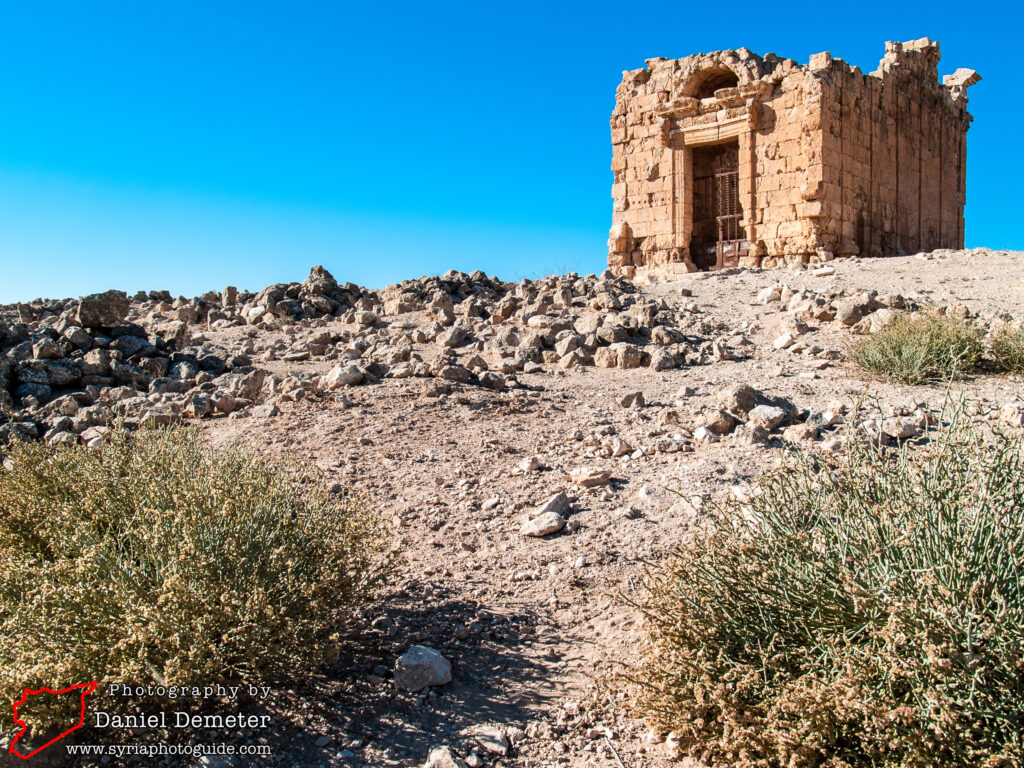
The small desert village of Ithriya (اثريا) was once the site of the ancient Roman settlement of Seriana. Remains of its beautiful third century temple, relatively well-preserved, survive in this harsh desert landscape located about one hundred and thirty kilometers from Hama (حماة) and about equal distance from Homs (حمص). Once an important crossroads, and considerably more fertile than it is today, Ithriya (اثريا) marked the point where the route between Tadmor/Palmyra (تدمر) and Qinnasrin/al-Aisa (قنسرين/العيسى) met the route between al-Rasafeh (الرصافة) and Salamiyeh (سلمية).
Today Ithriya (اثريا) is little more than a police outpost and Bedouin village. It is still a crossroads, however, as the Salamiyeh (سلمية) to al-Raqqa (الرقة) highway passes through here, and there are also roads south to Tadmor/Palmyra (تدمر) and north to Khanasar (خناصر). The temple, visible to the south of the highway, is a 10 or 15 minute walk away. Follow the main road that runs south through the village and on to Tadmor/Palmyra (تدمر). The temple is orientated towards the east, and the eastern doorway has some beautiful decoration.
This temple stands alone on the south of a former citadel promontory, its four intact walls of mellowed limestone isolated in a moonscape of scattered, flinty stones. It was soundly built in solid limestone blocks, resembling in many ways the techniques used with the same type of stone in Tadmor/Palmyra (تدمر). The pseudo-peripteral temple is oriented to the east and the walls carry elegant pilasters with capitals in the Corinthian order. There is little trace of either the pronaos that preceded the cella or the stairs that led up to it. The wide eastern doorway is richly decorated with a typically Syrian semi-circular relieving arch above. A staircase embedded in the masonry to the right of the doorway ascends to what was once a terrace. A temenos wall would have surrounded the temple.
The building dates from the early third century, the style of the doorway bearing the same elaborate treatment used in contemporary Baalbek. It seems likely that it was erected by an imperial official at an important crossroads of the Roman road system. Alternatively, but probably less likely, it was an initiative by local interest groups concerned to display their ‘Roman-ness’. There is no firm evidence as to the identity of the god to whom the temple was dedicated, but the German researcher Gogräfe has oscillated between an astral divinity or the local equivalent of the classical Apollo, Nabu, whose statue was found nearby. In the Byzantine period, the settlement was enclosed by walls which incorporated the temple as a fortified watchtower. In the Abbasid and Mamluk periods, the remains served as a way-station on the Sultan’s travels between Damascus (دمشق) and the Jezira.
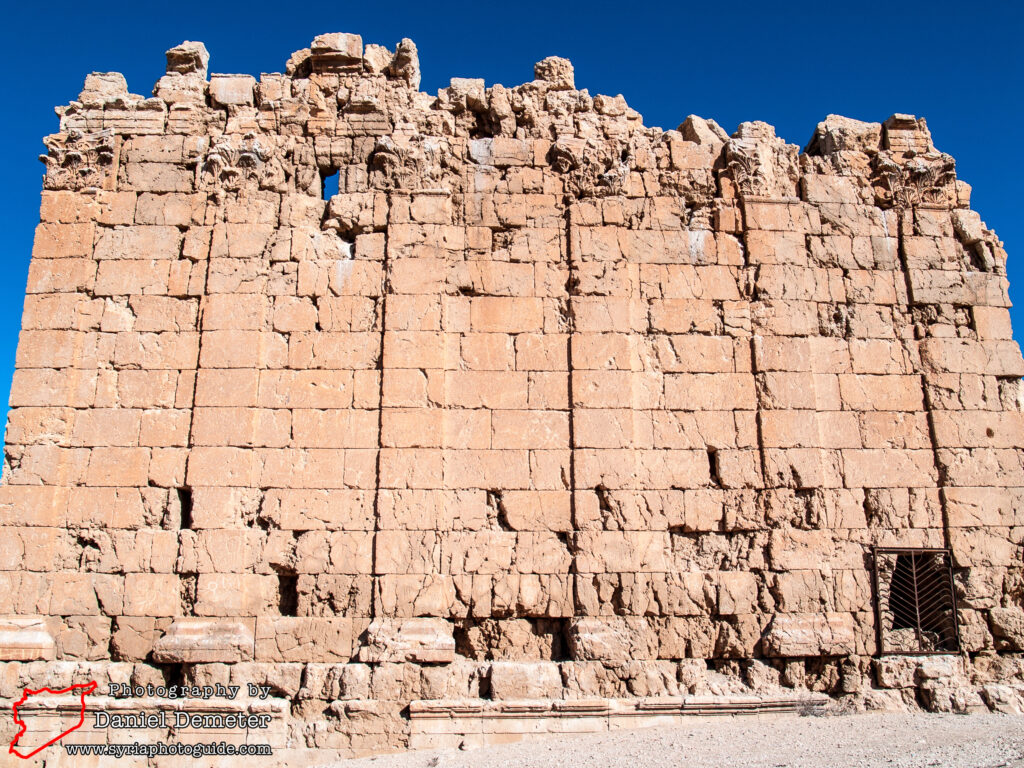
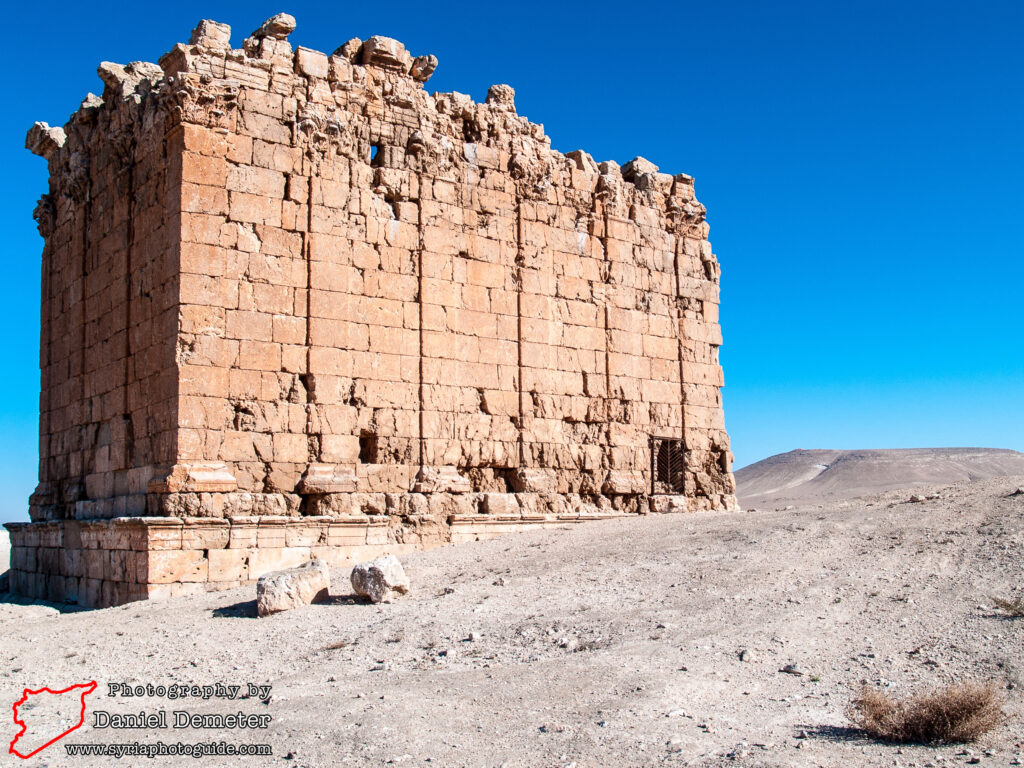
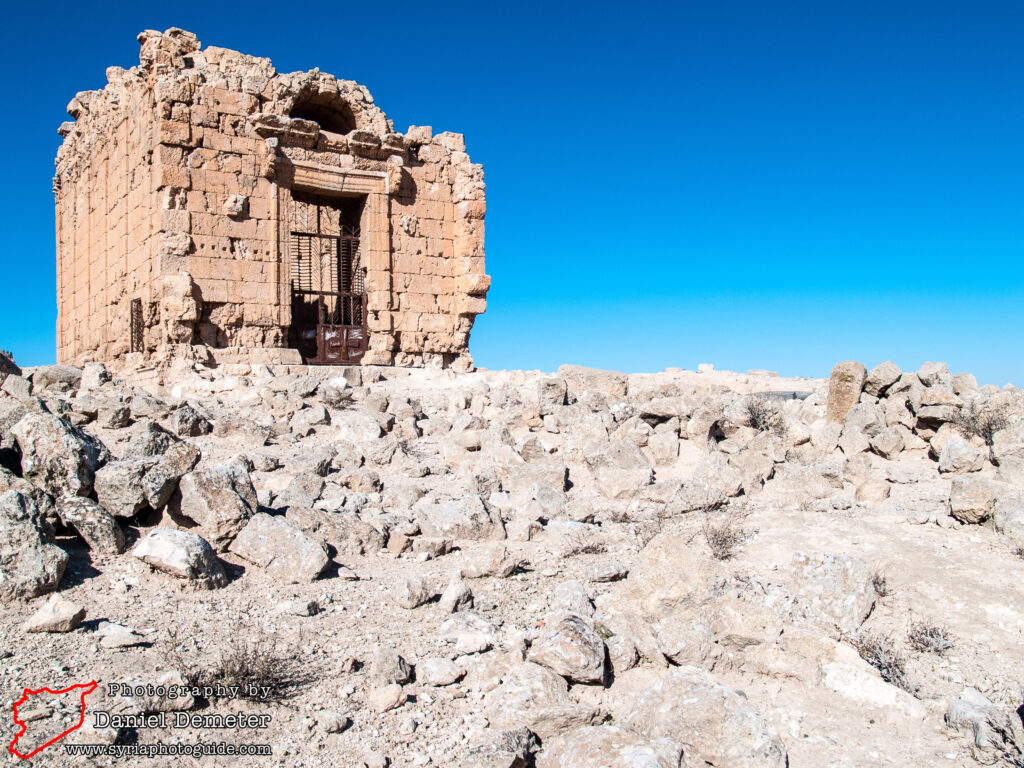
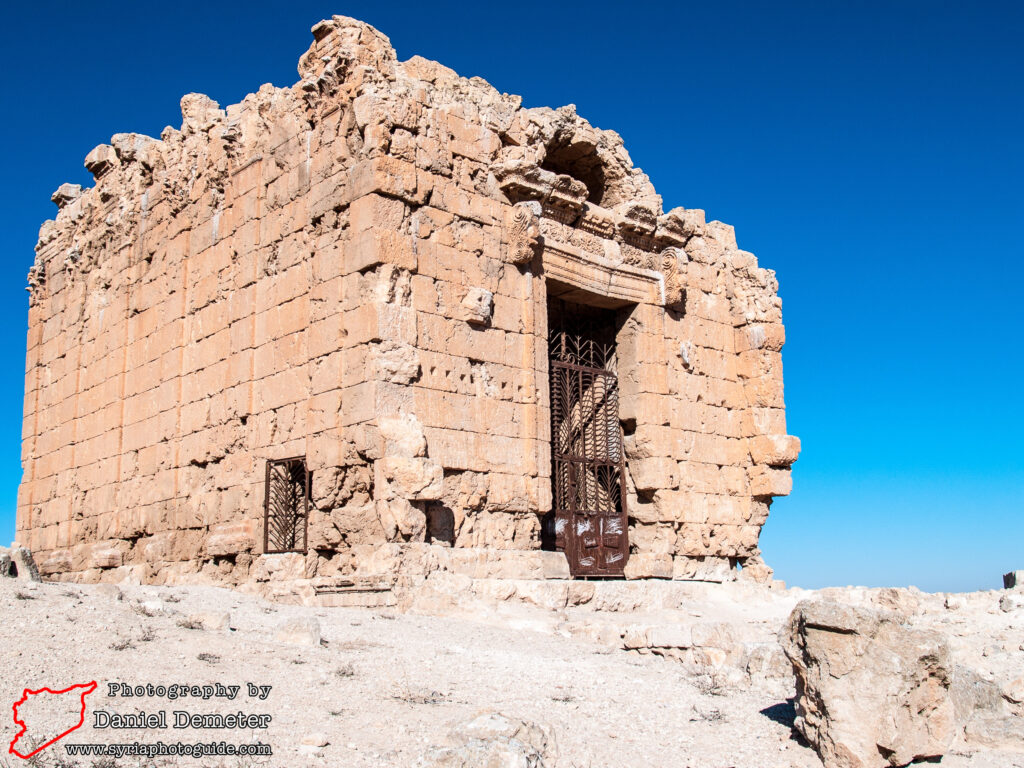
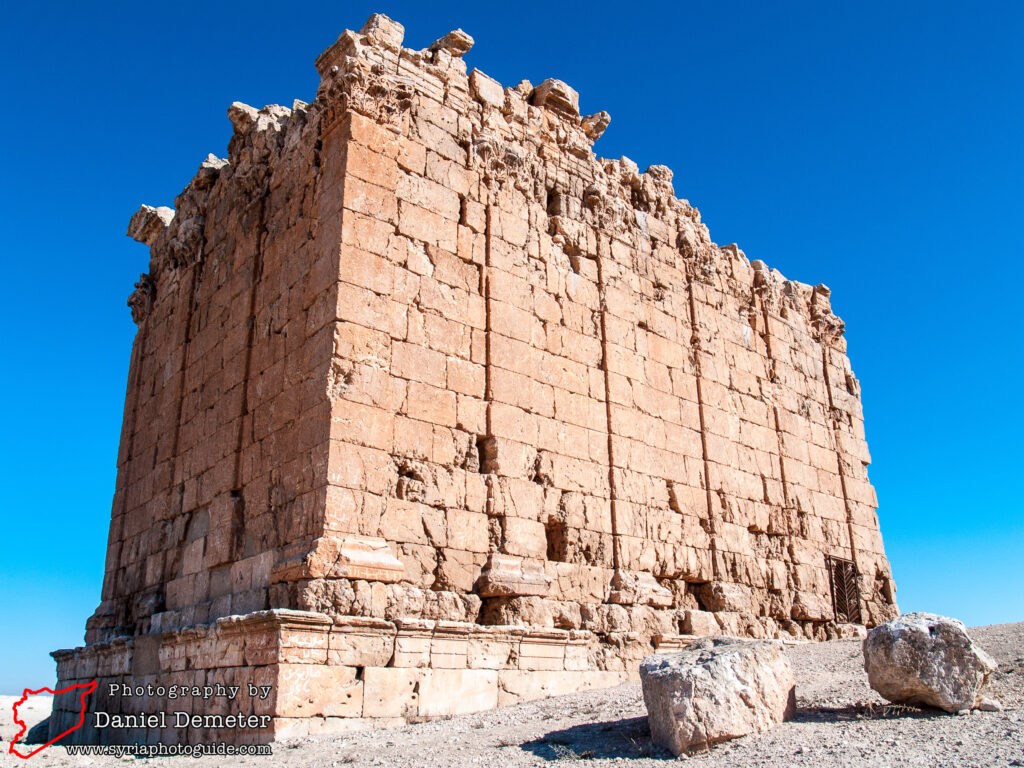
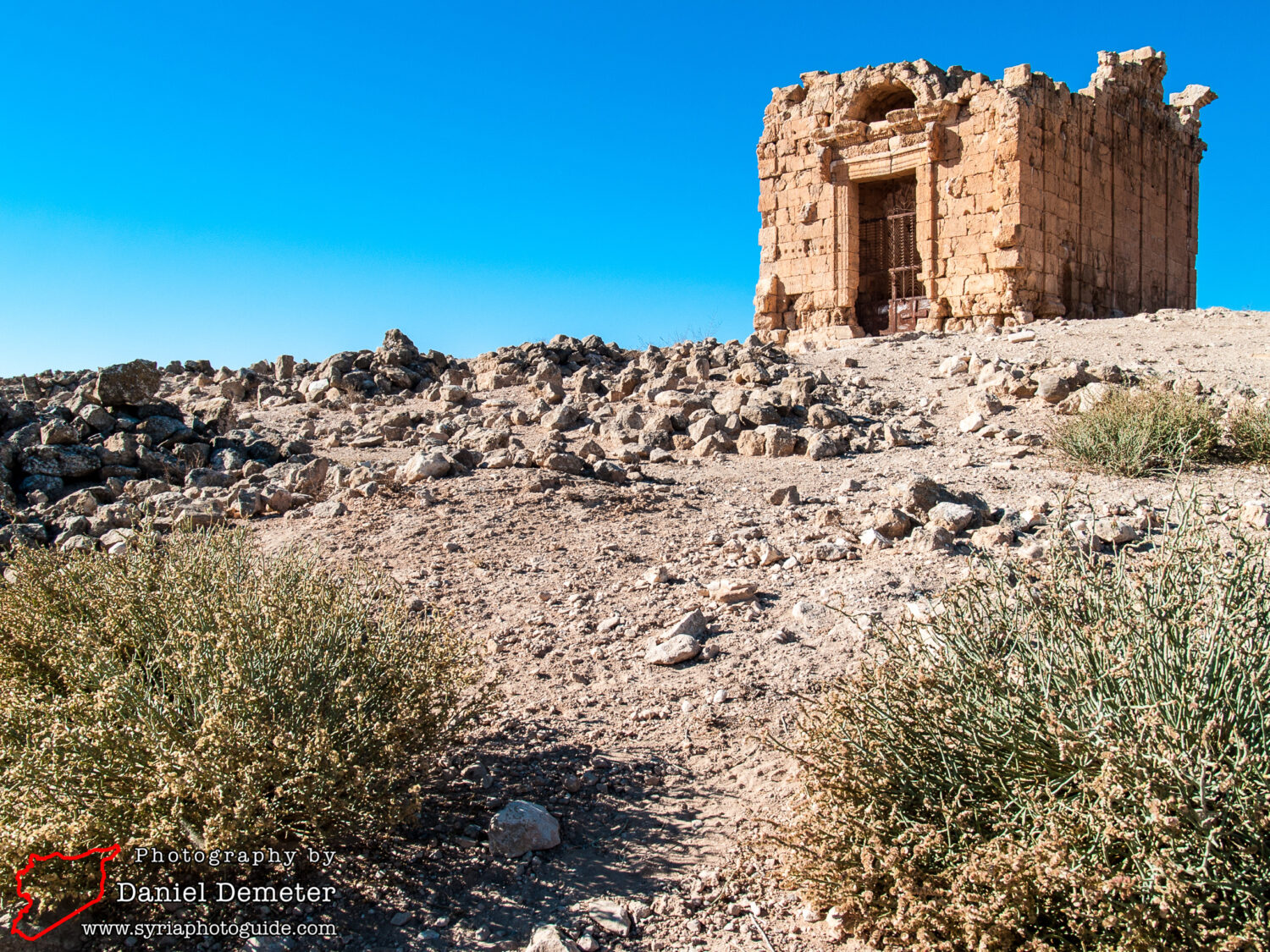
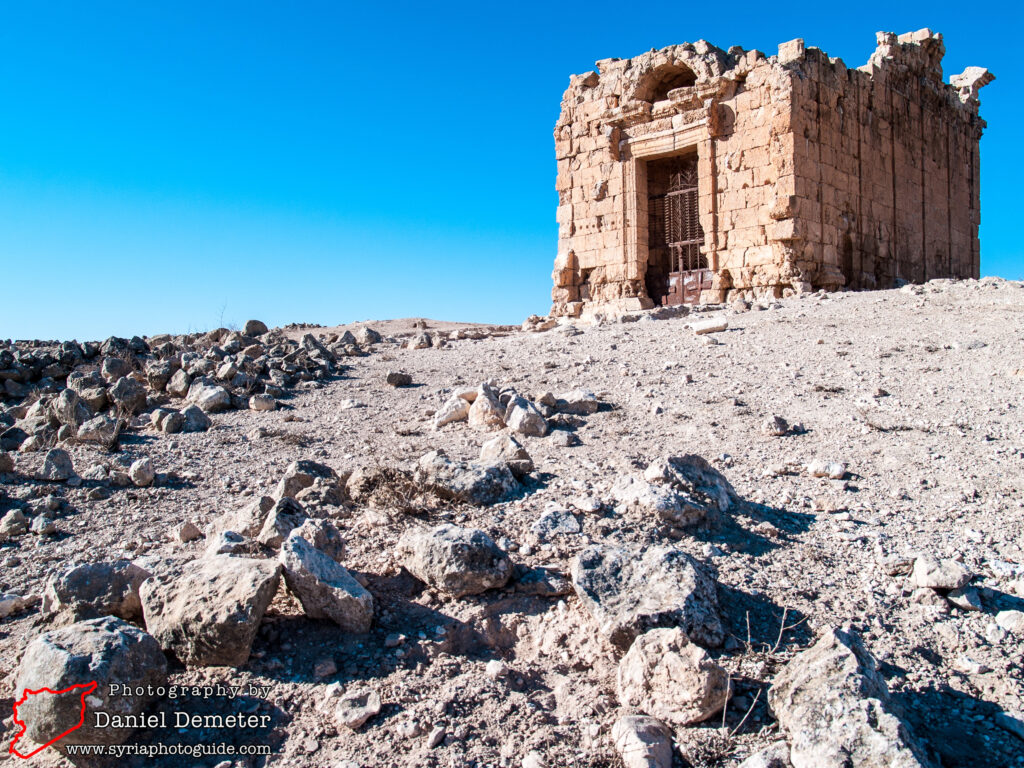
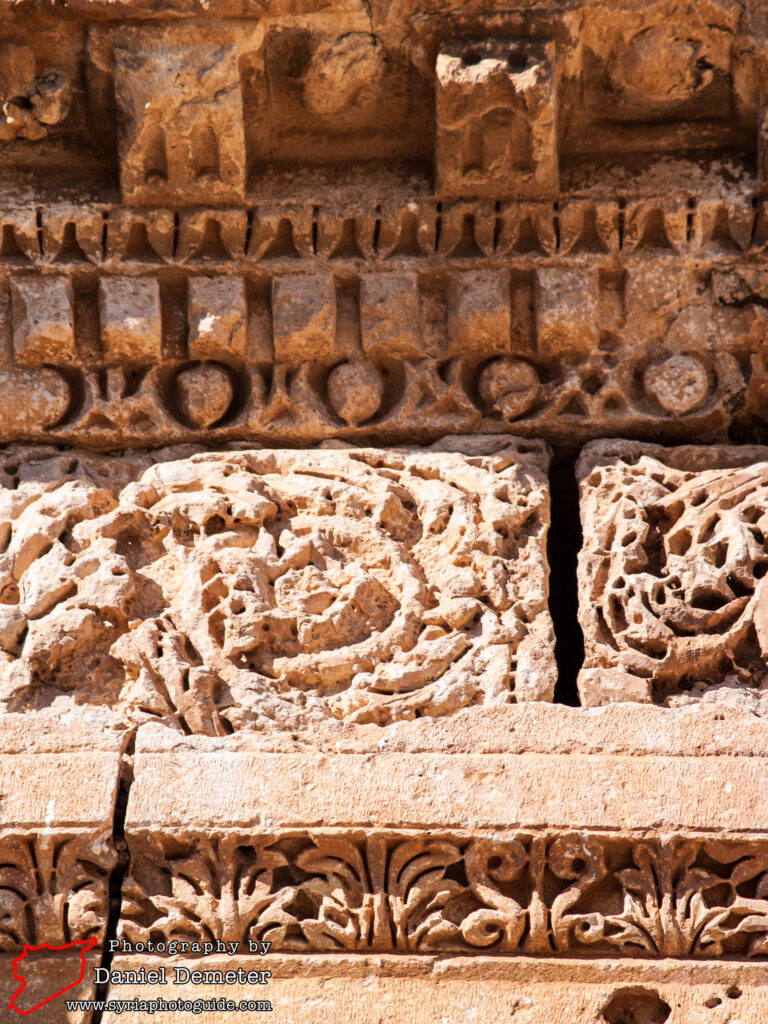
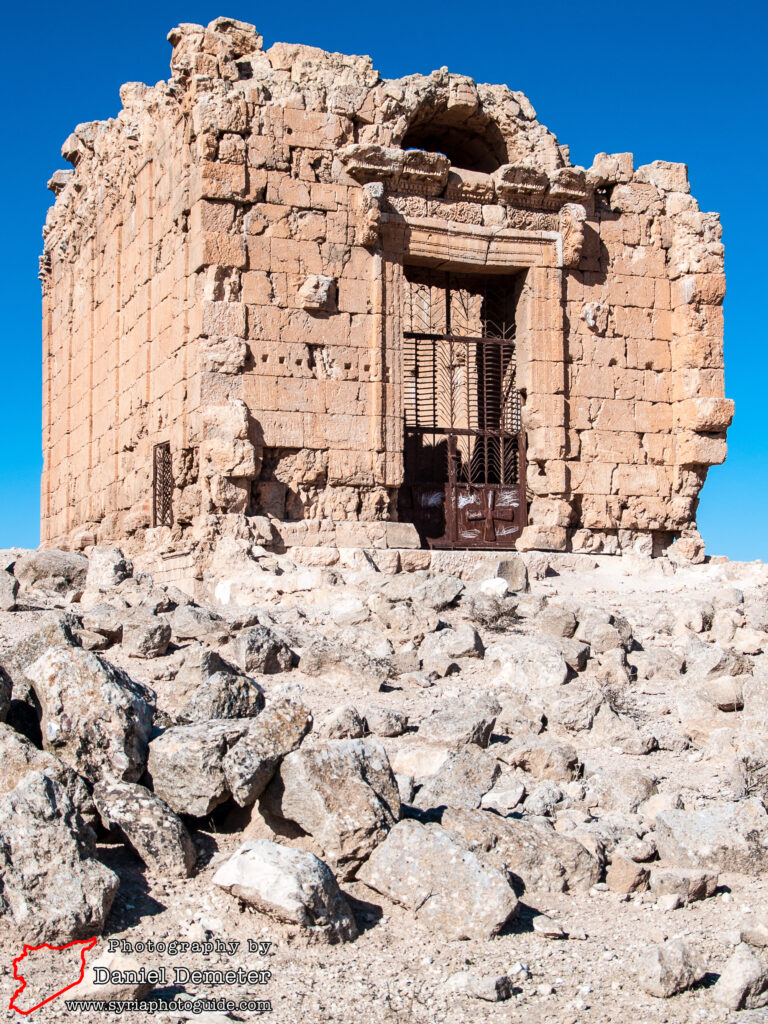
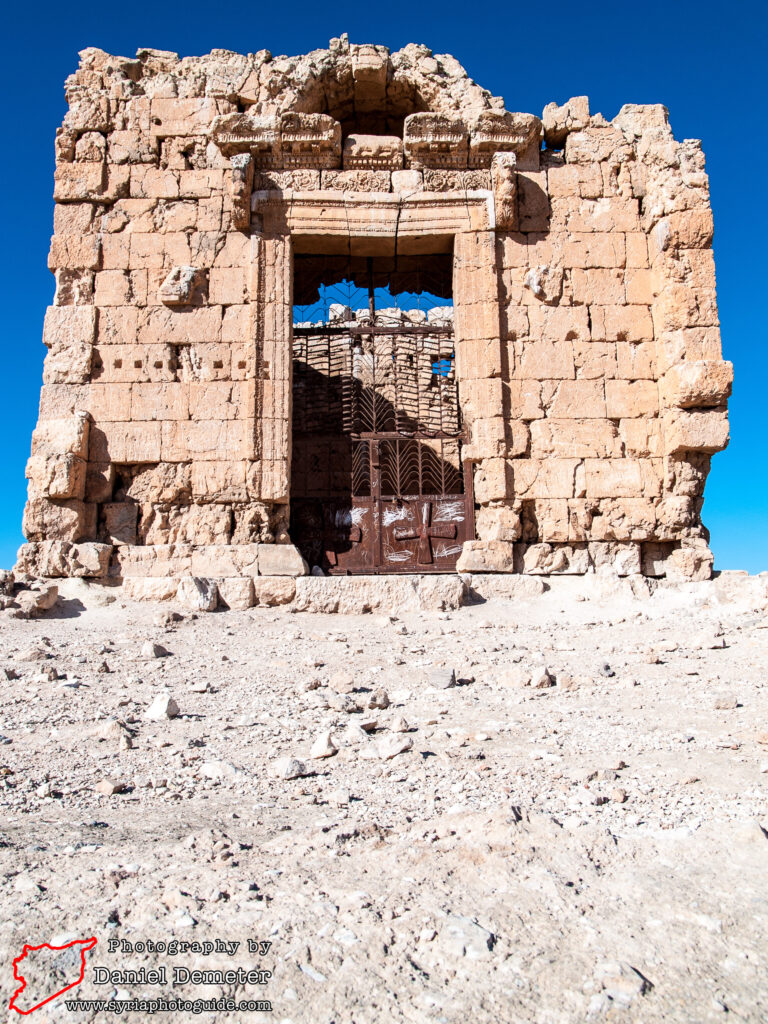
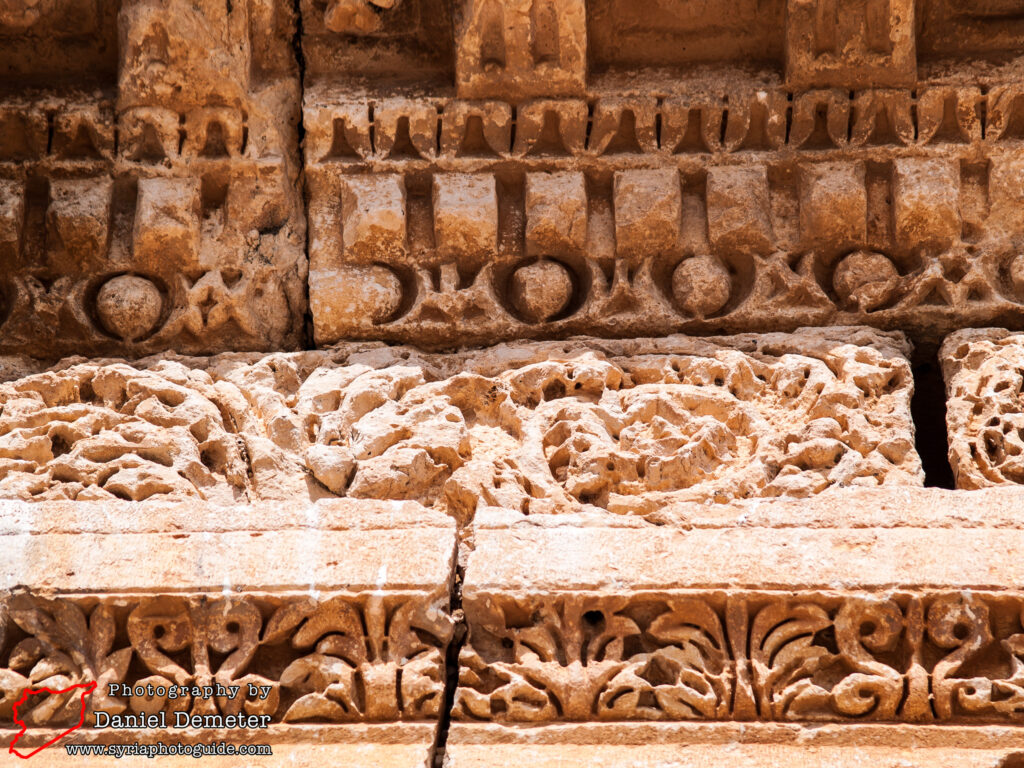
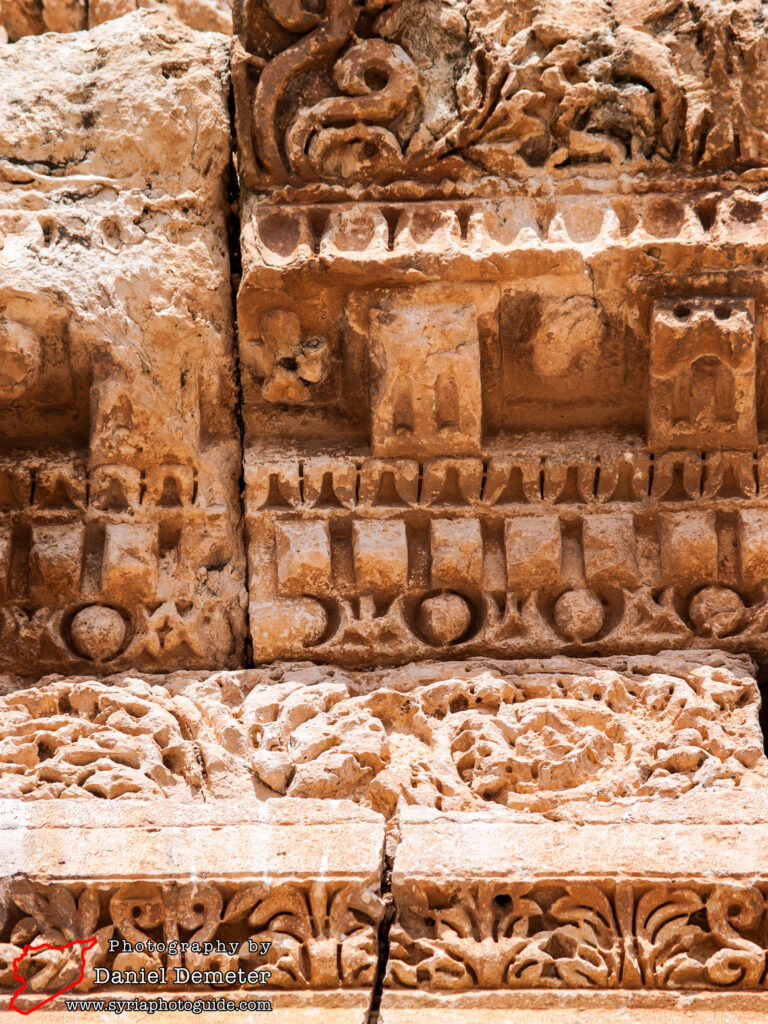
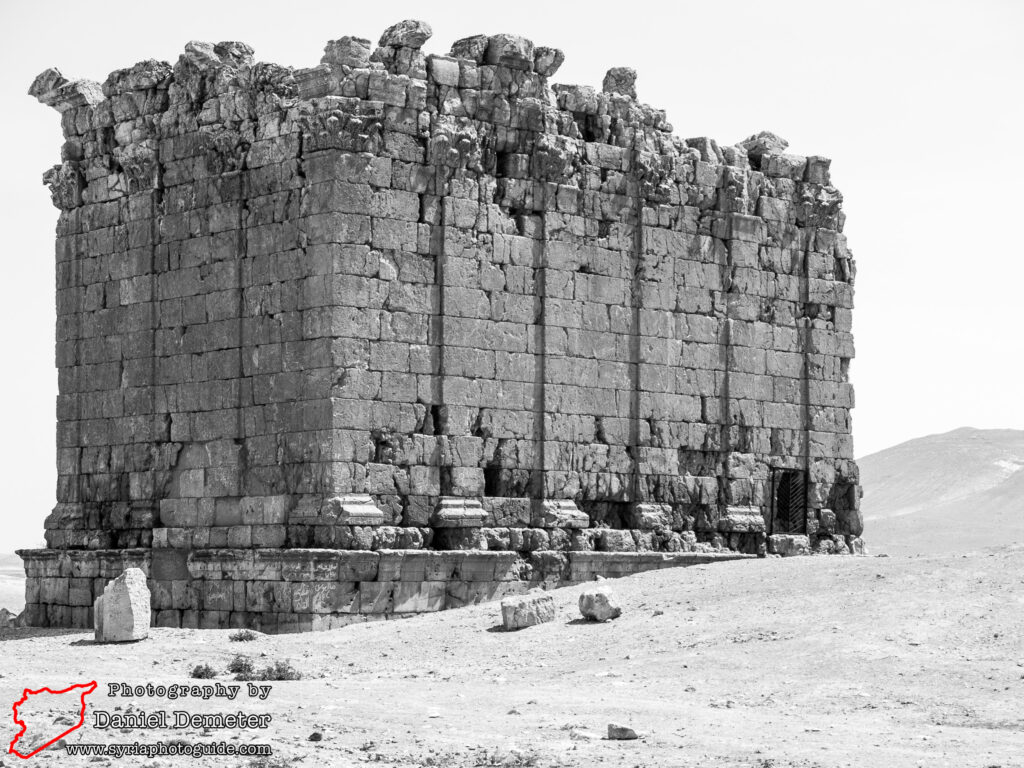
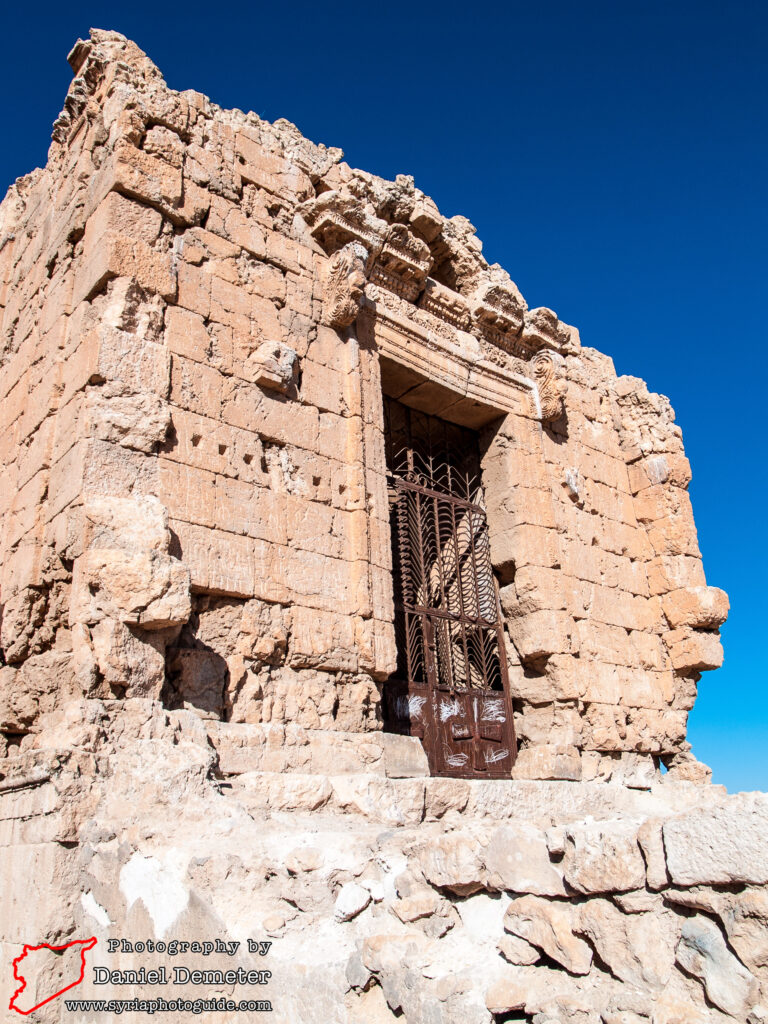
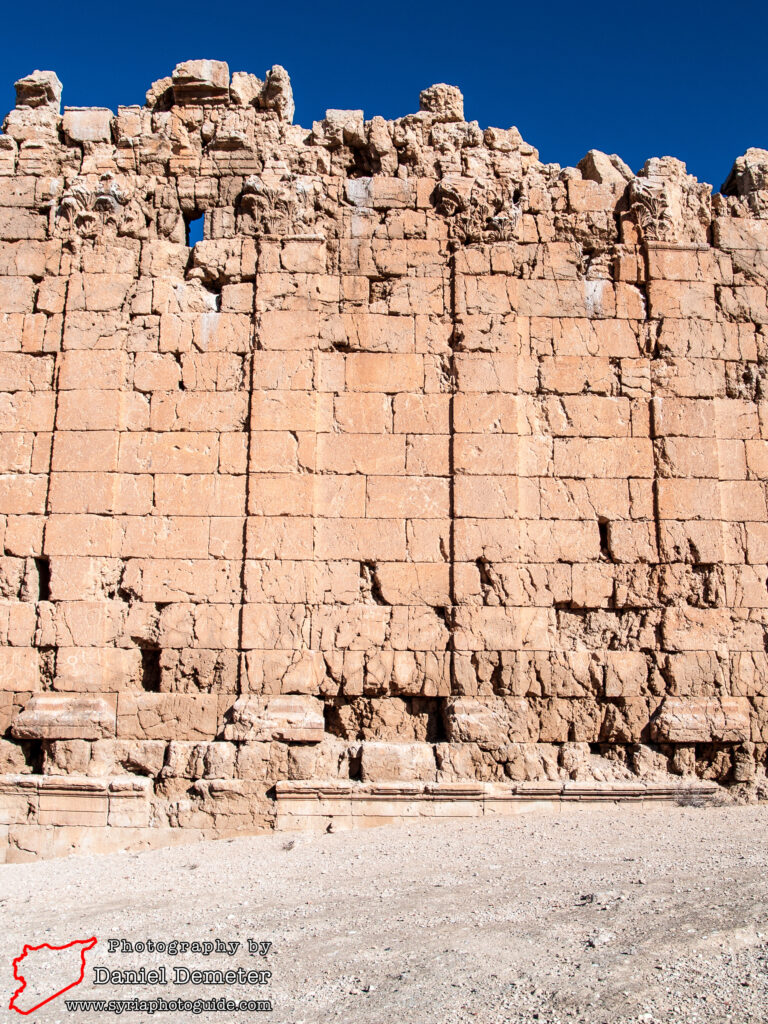
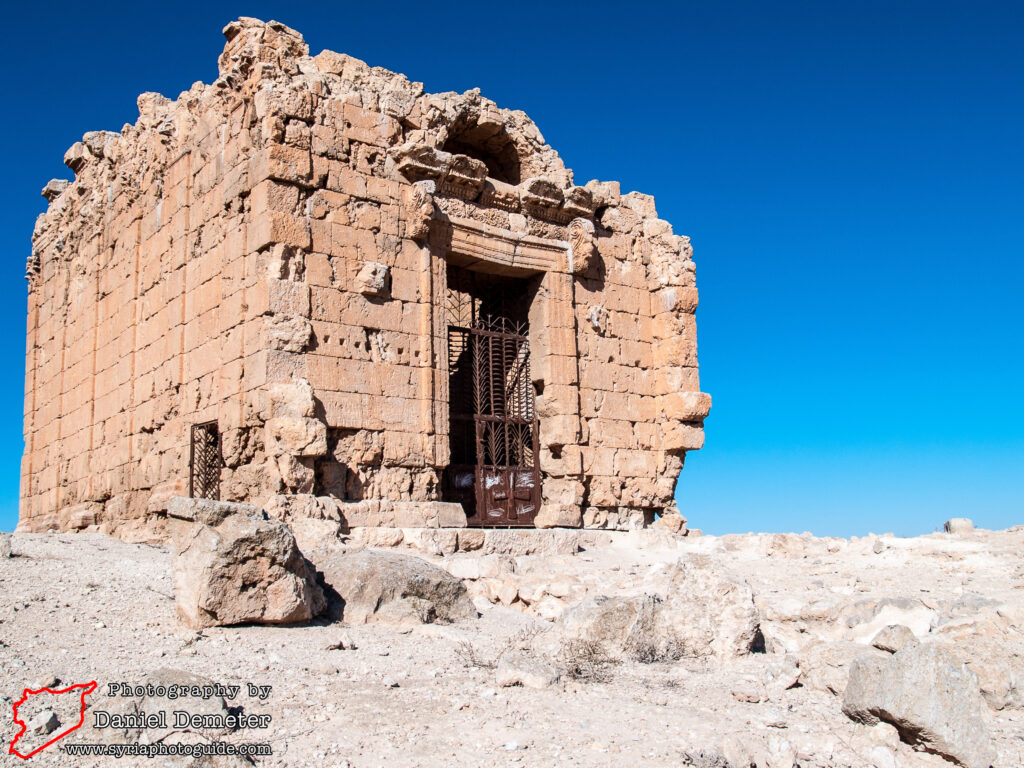
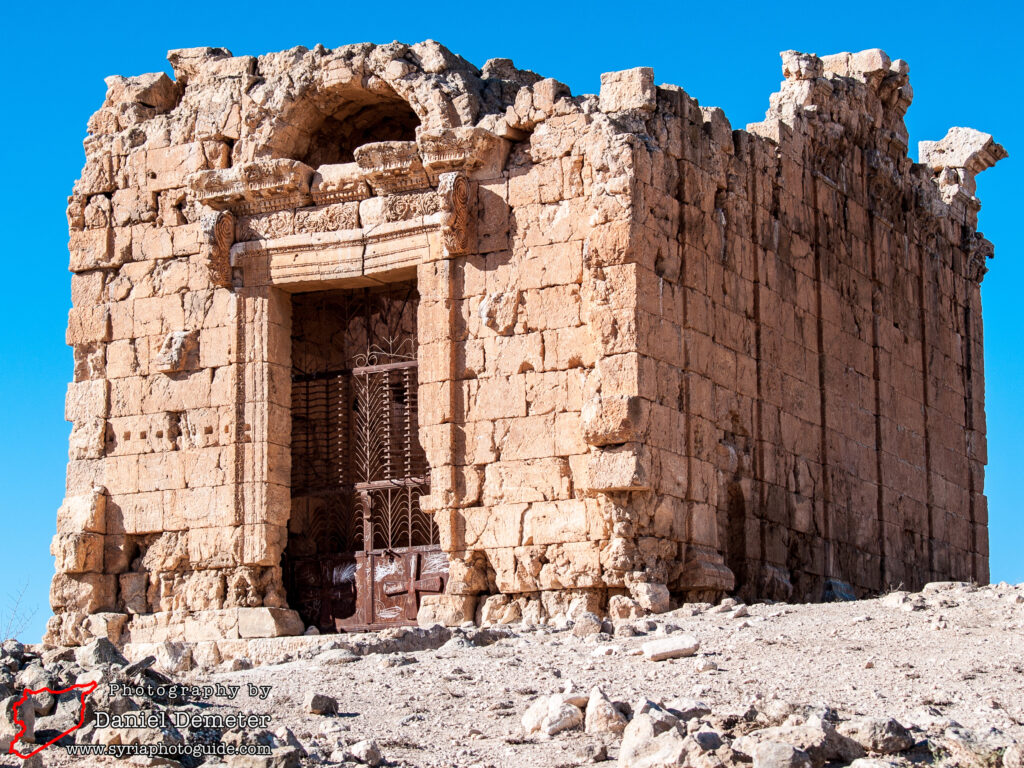
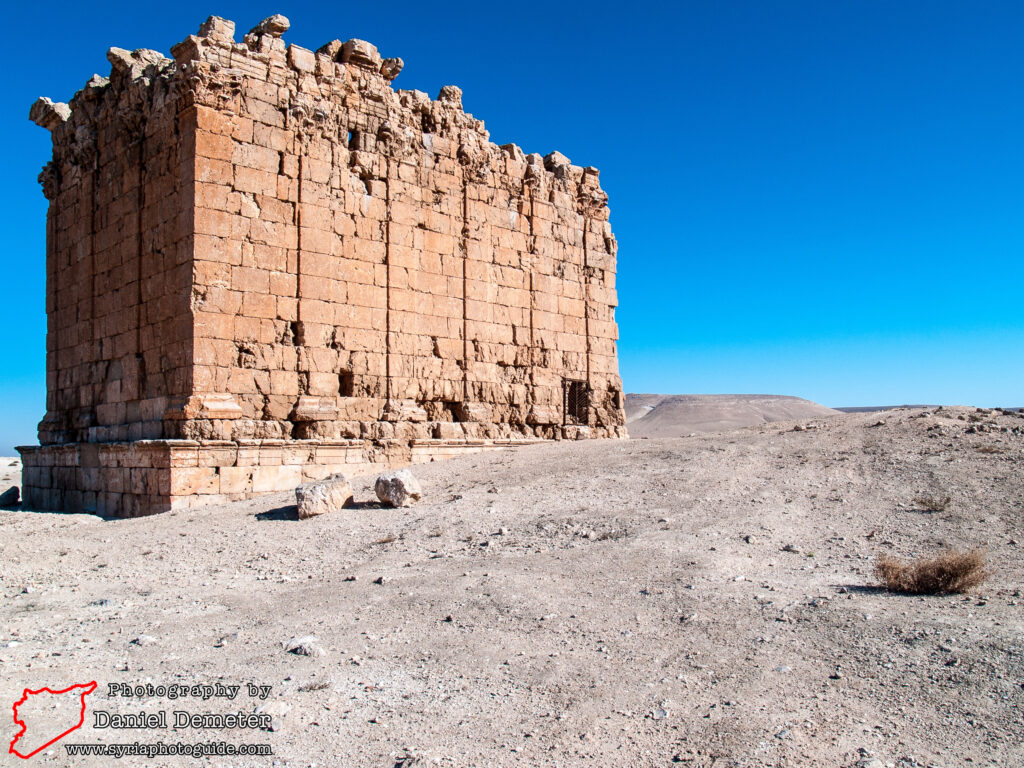
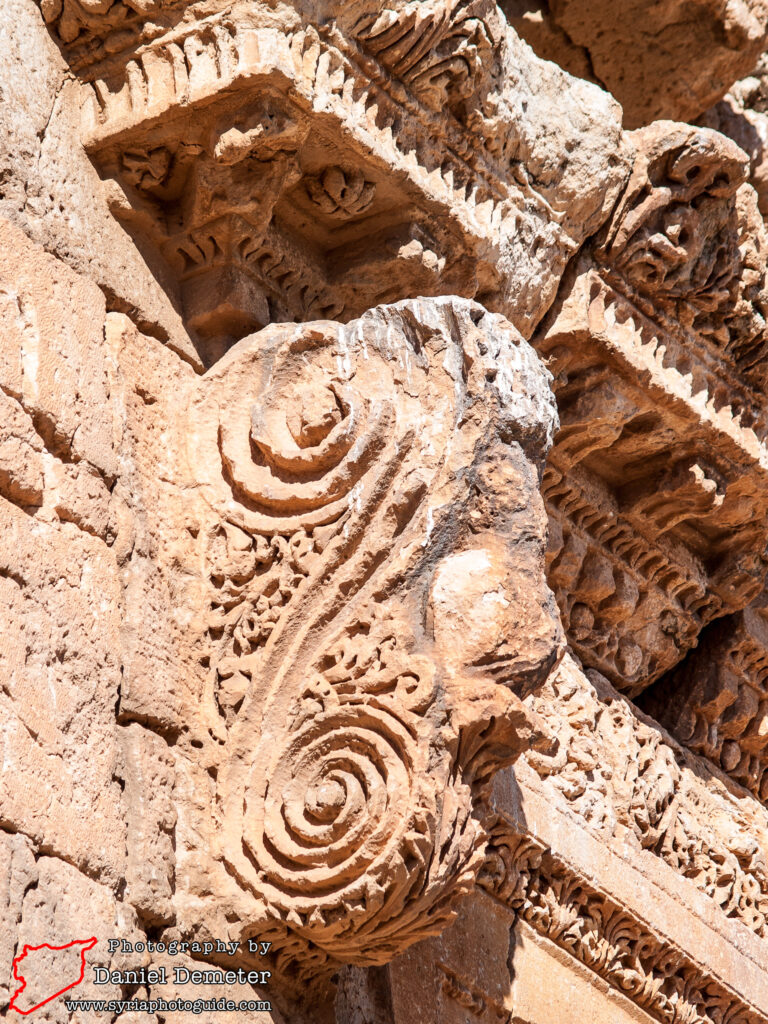
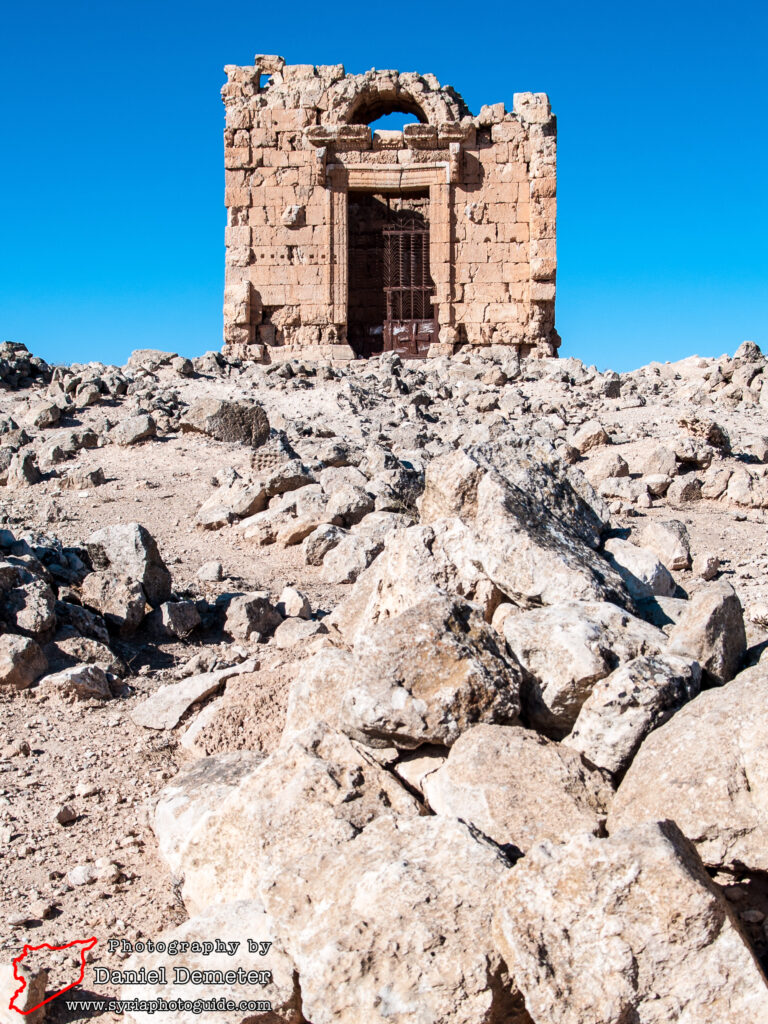
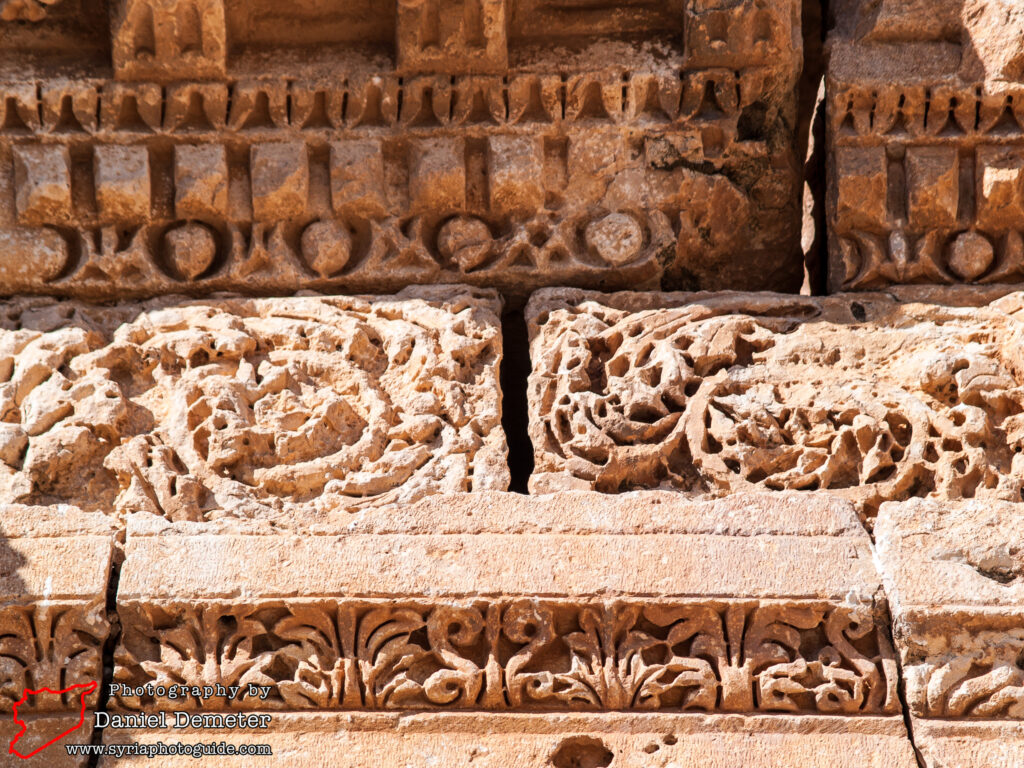
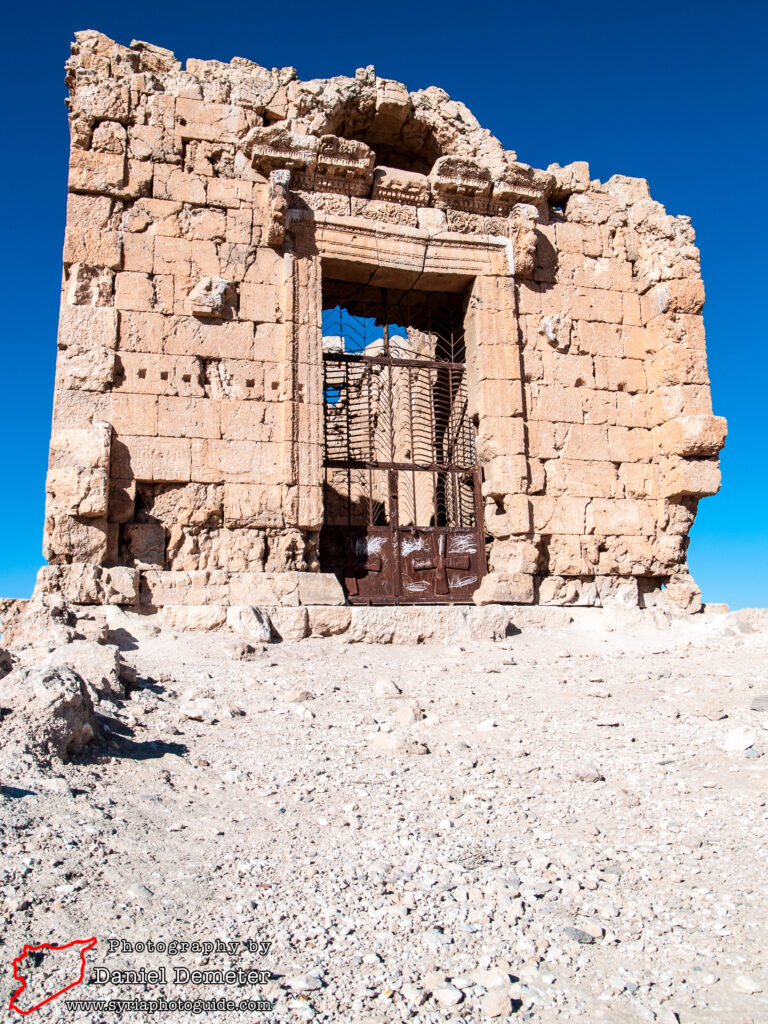
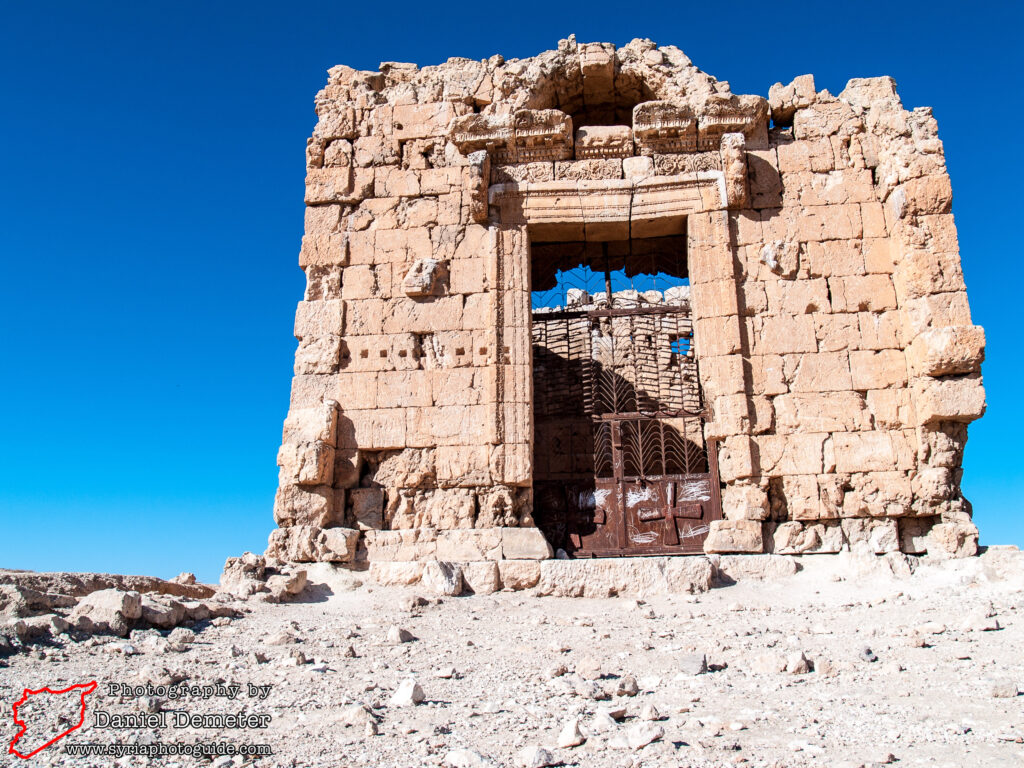
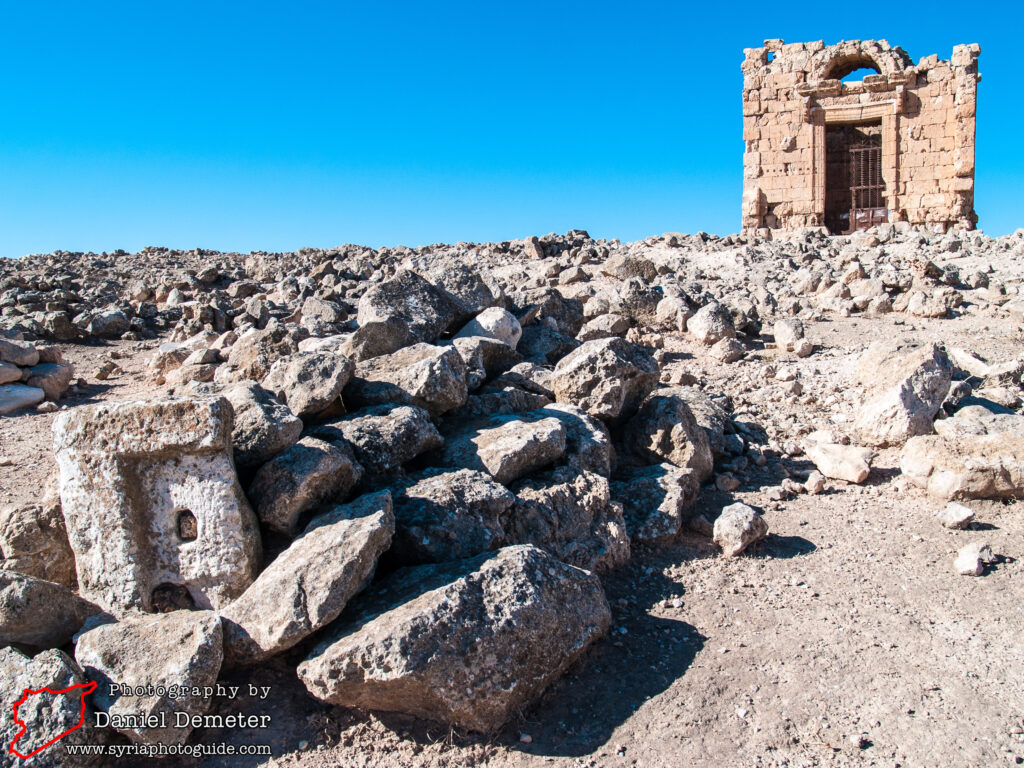
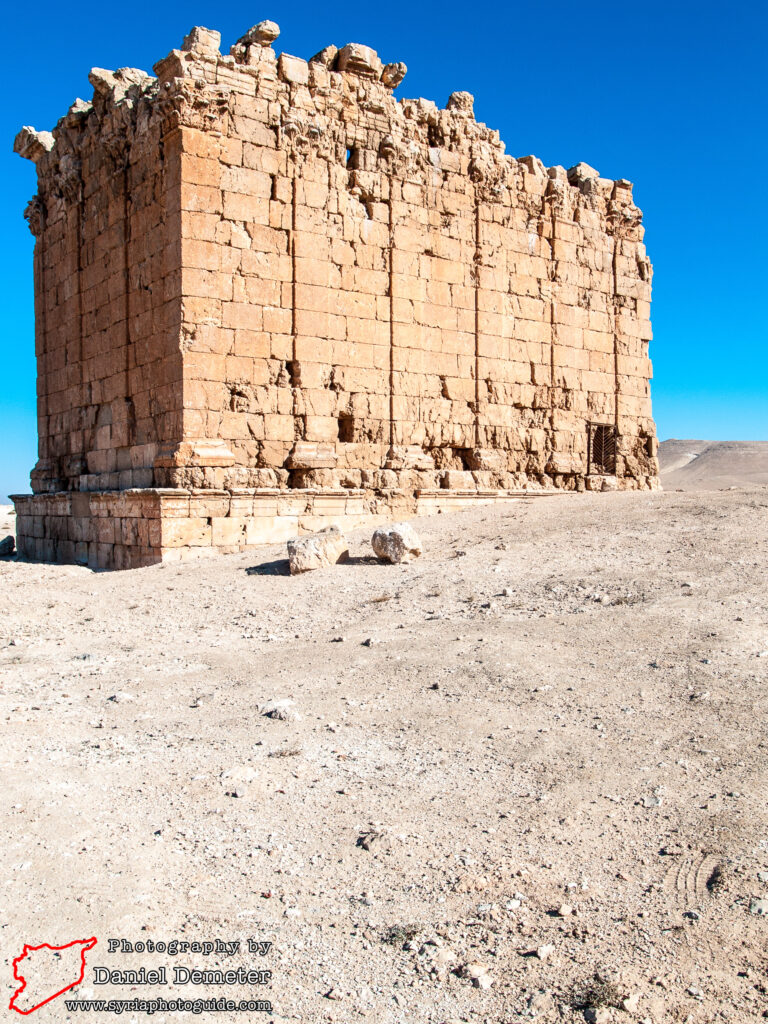
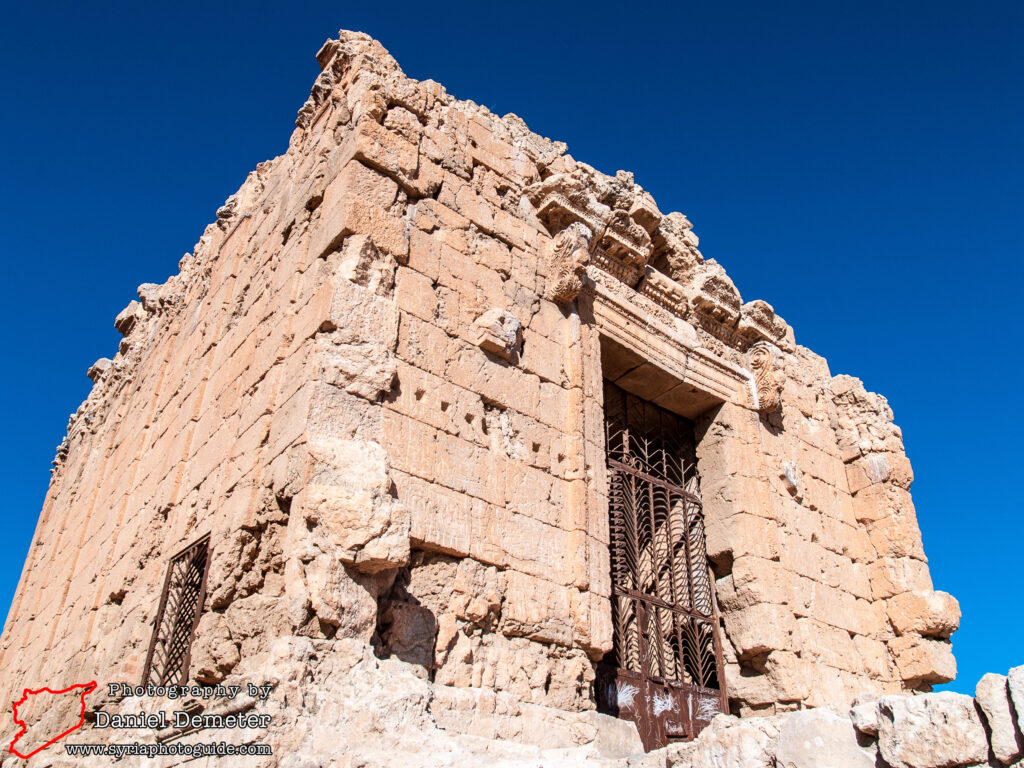
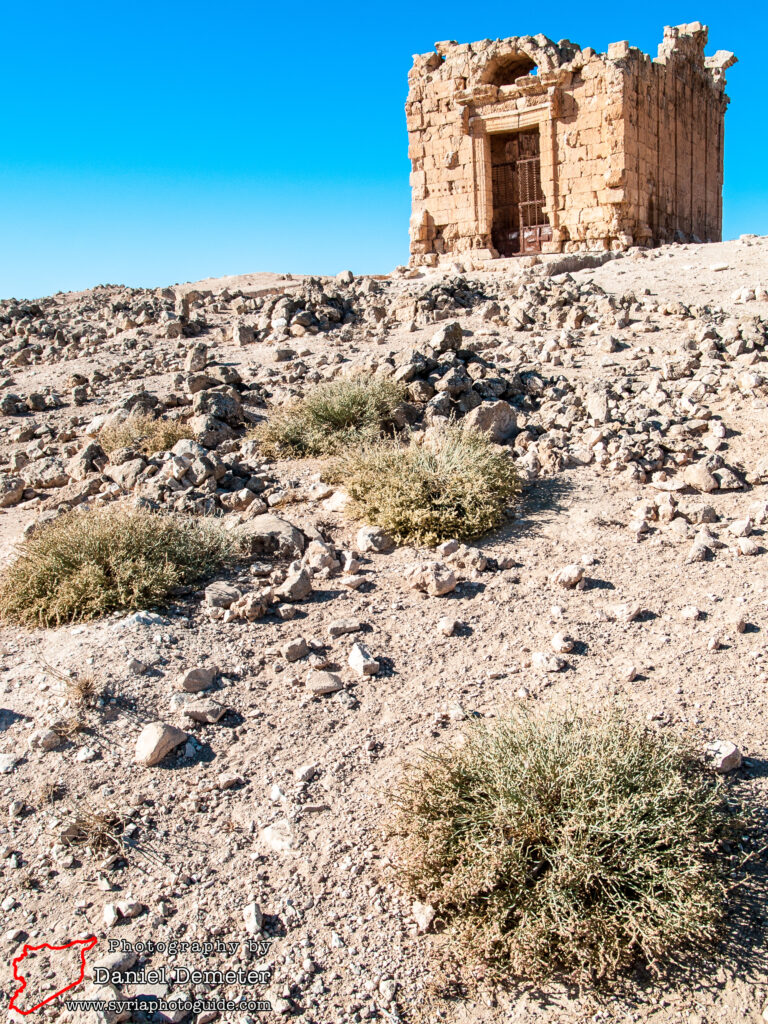
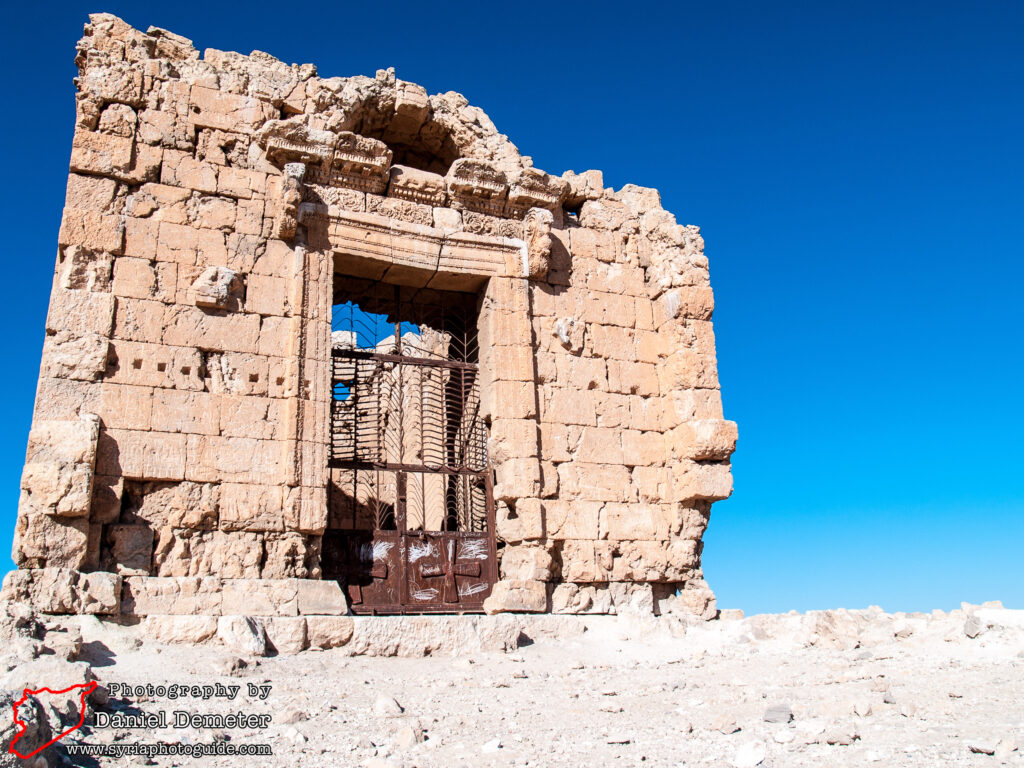
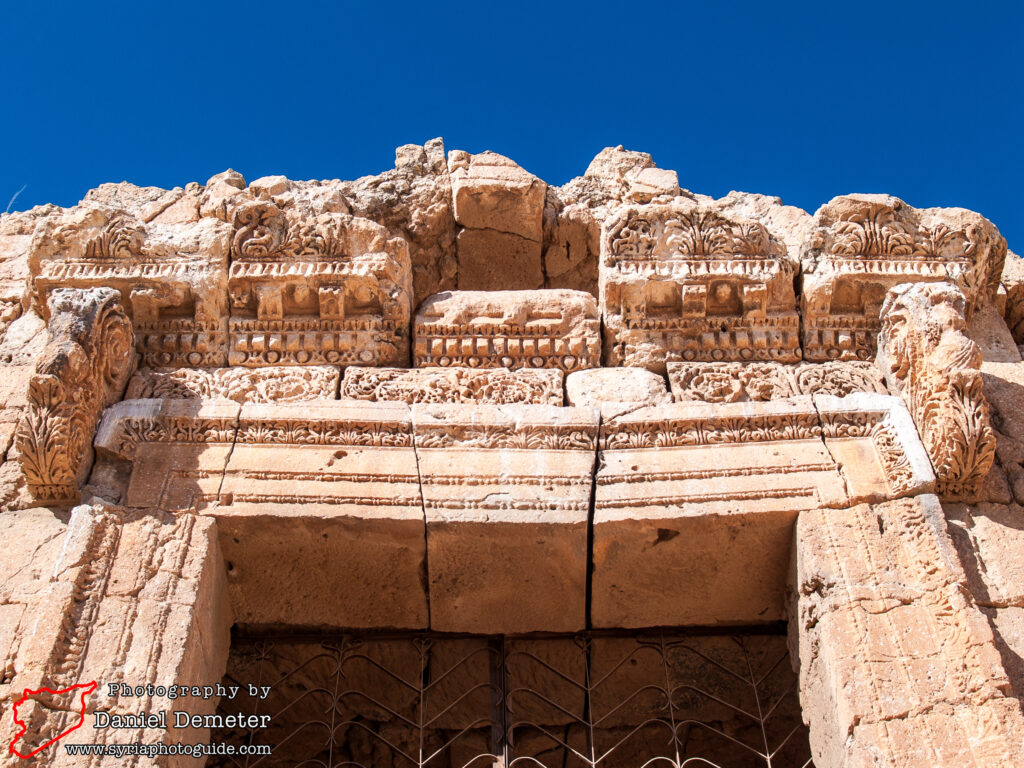
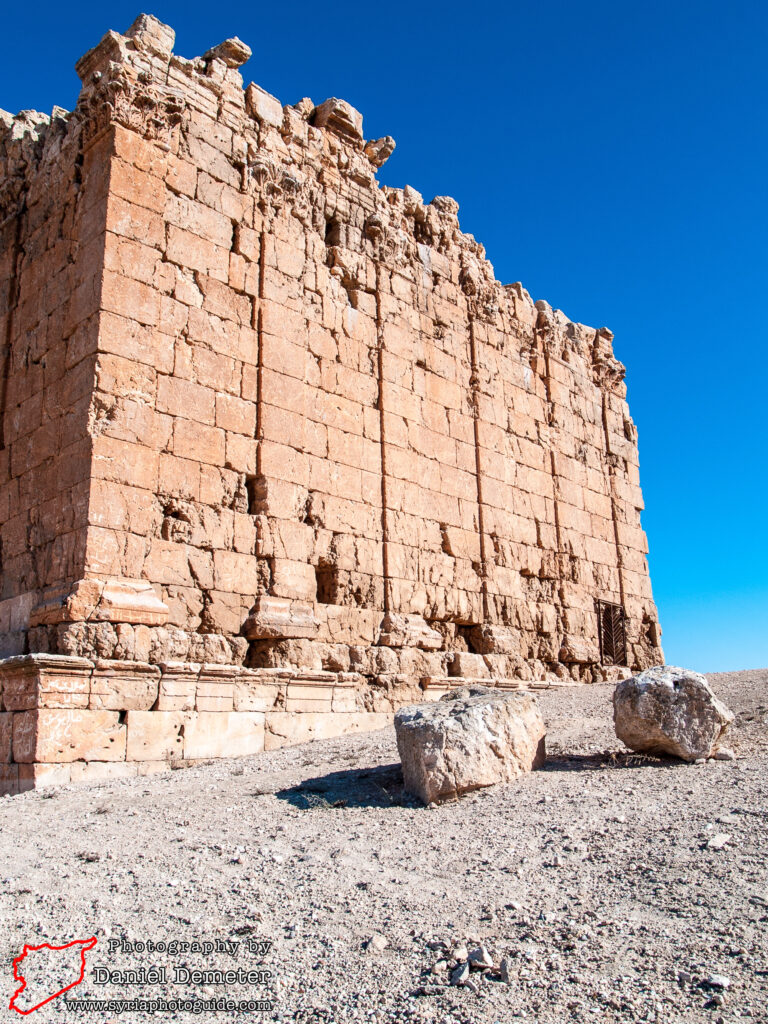
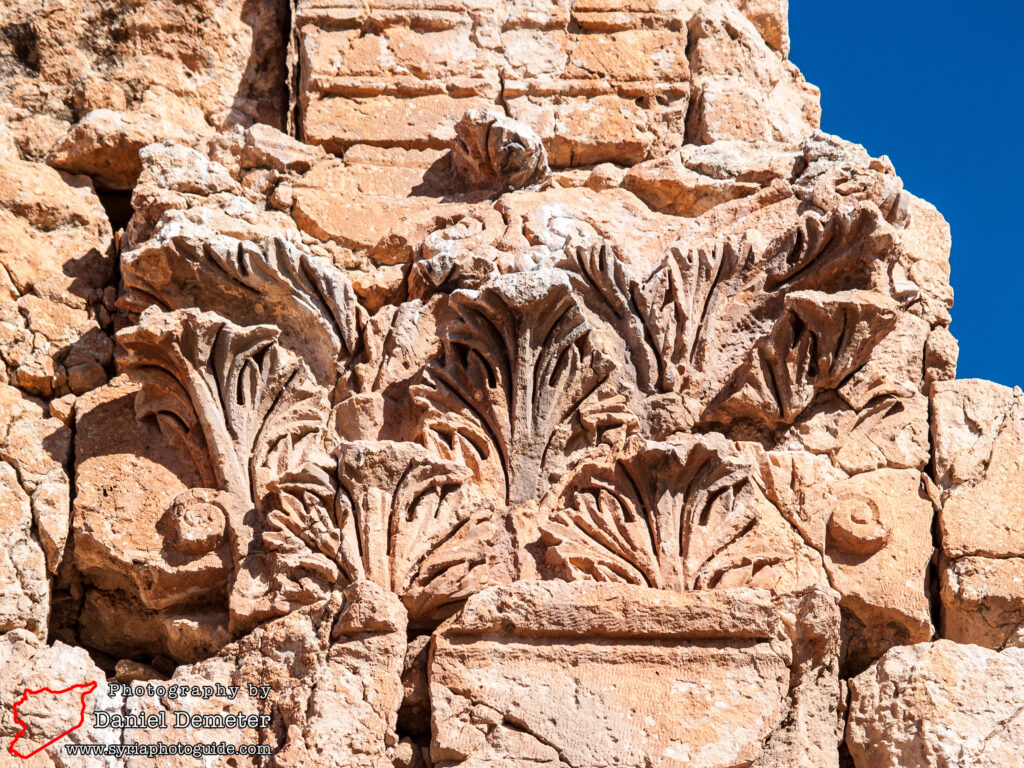
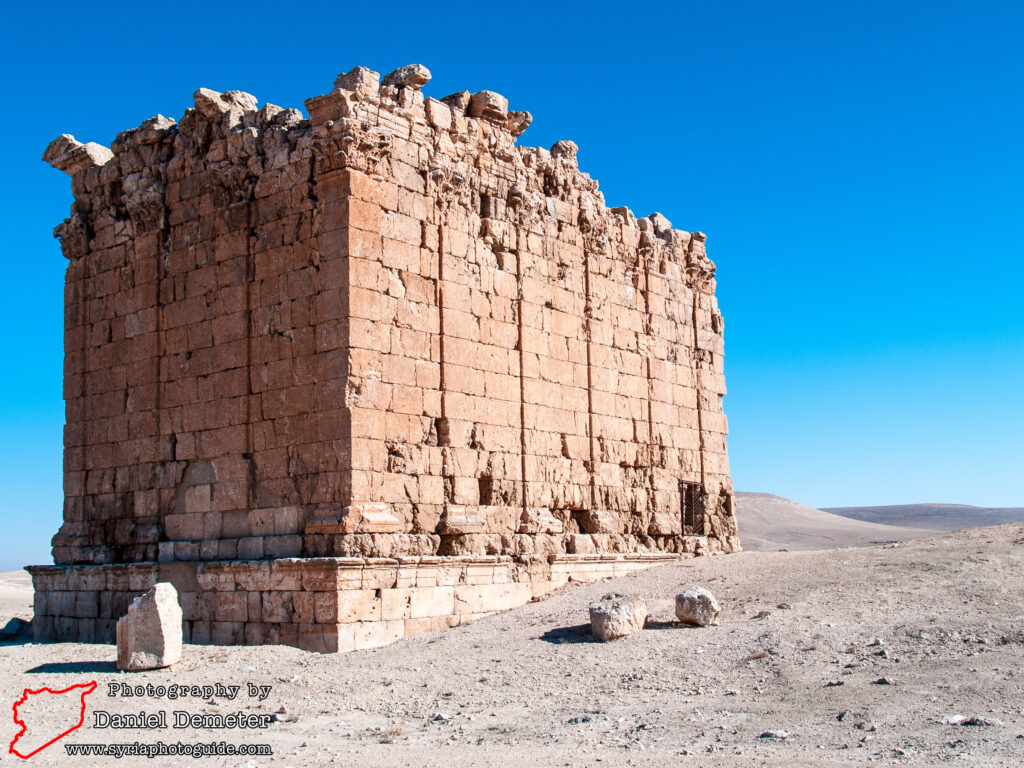
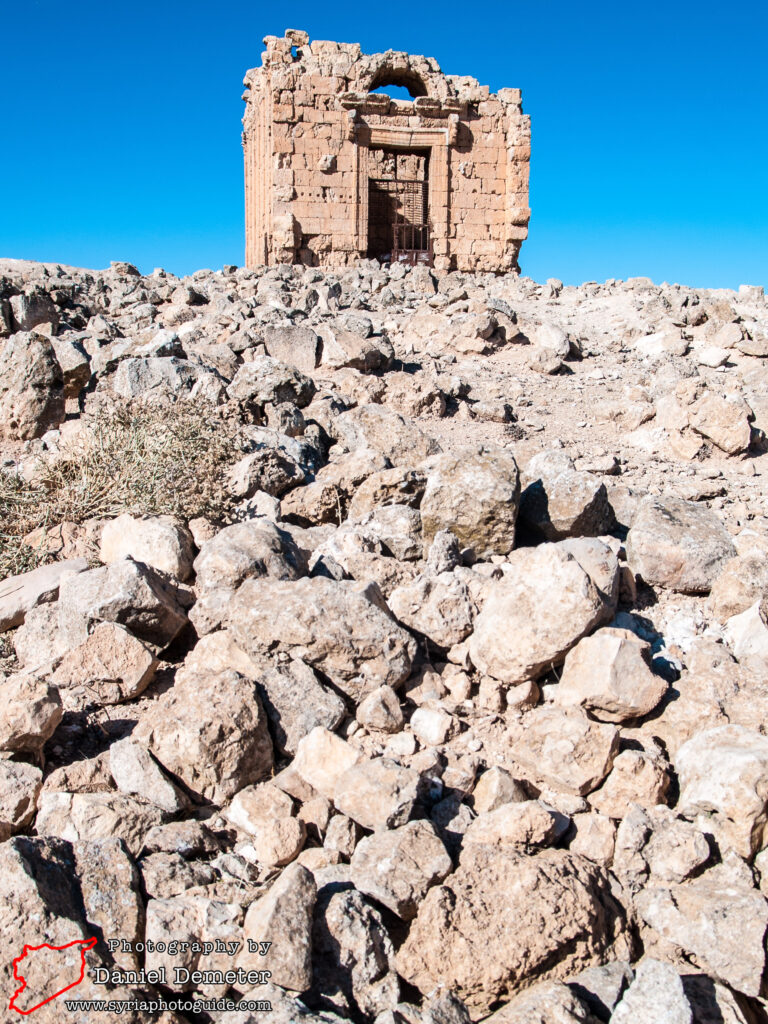
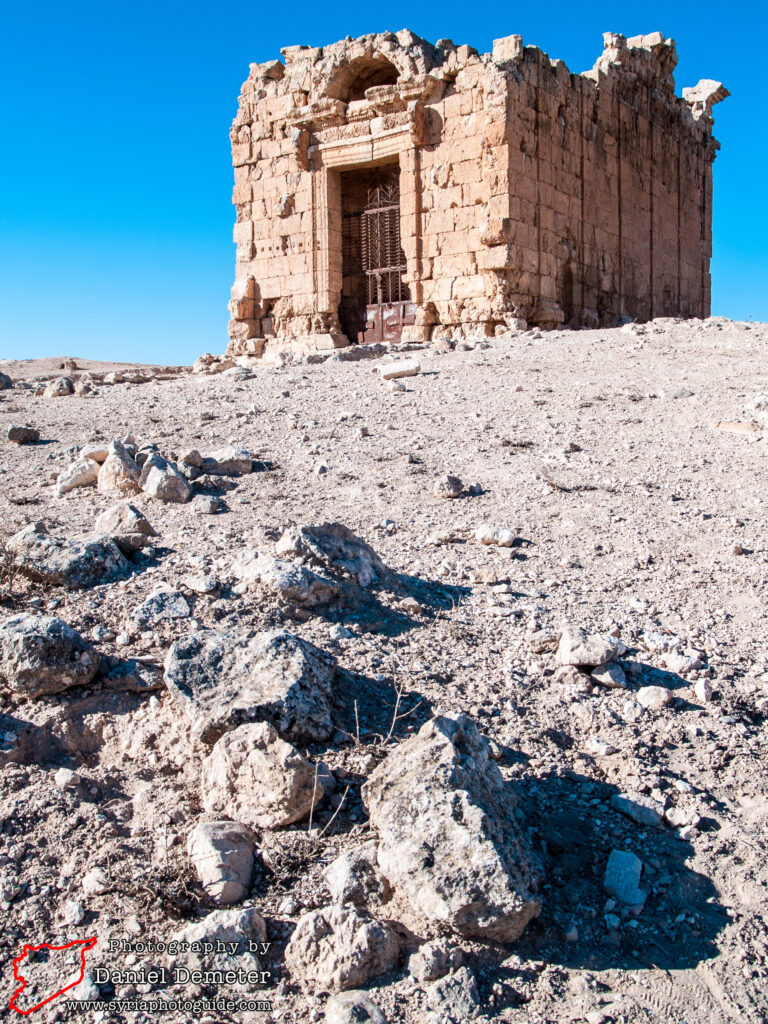
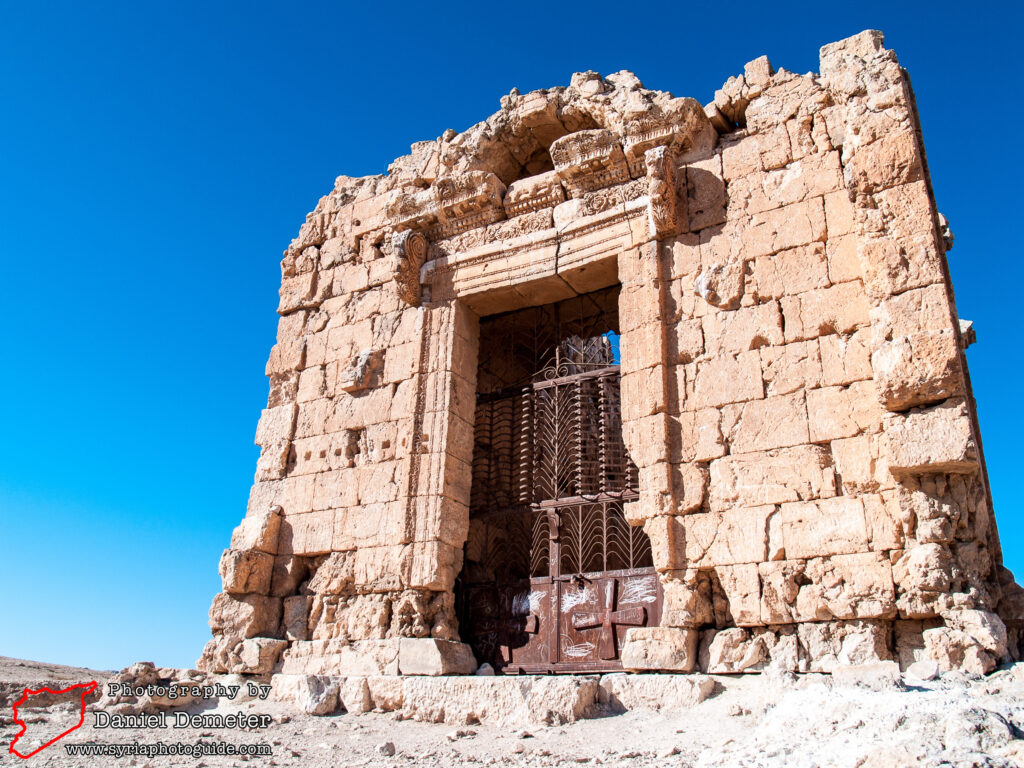
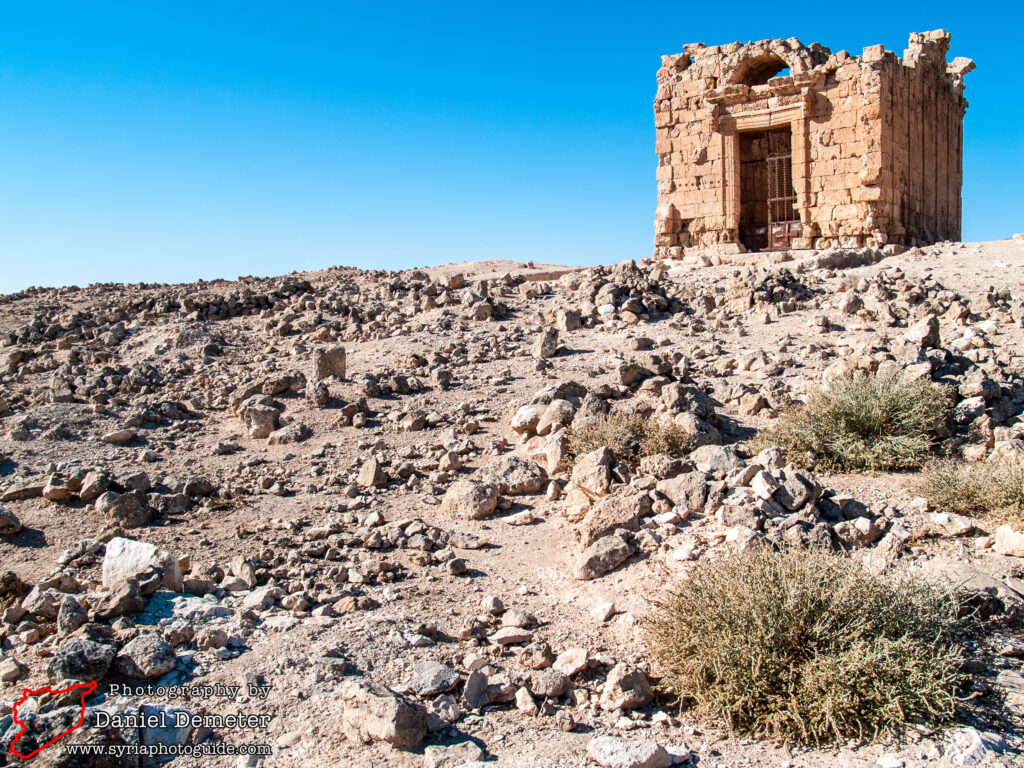
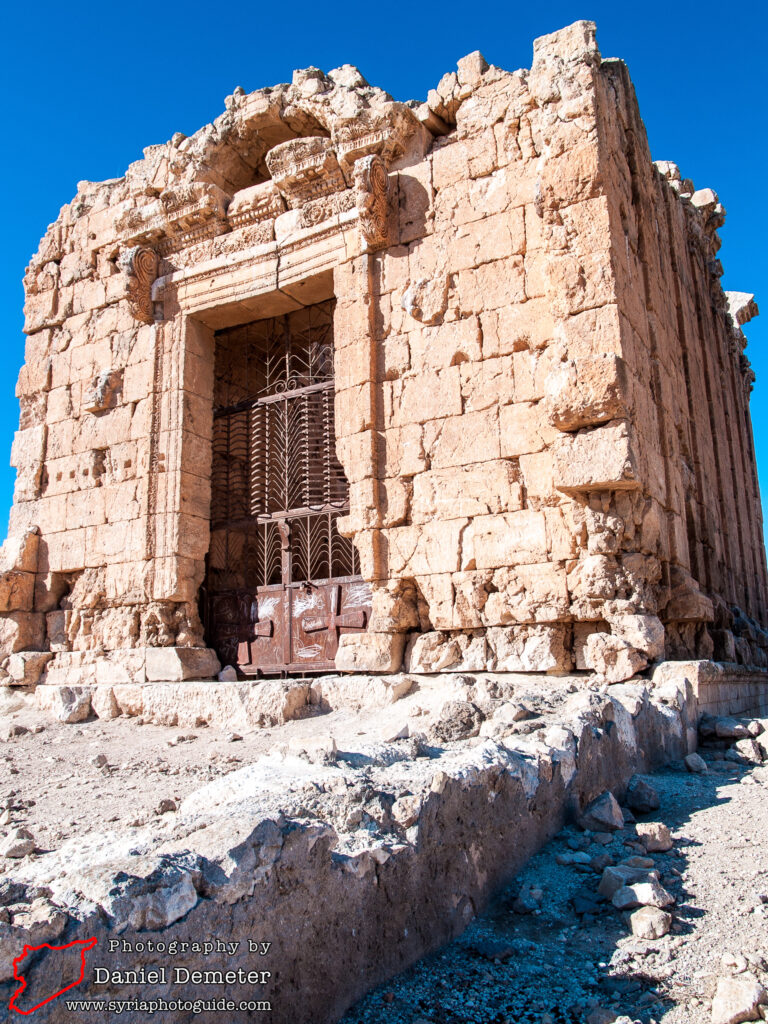
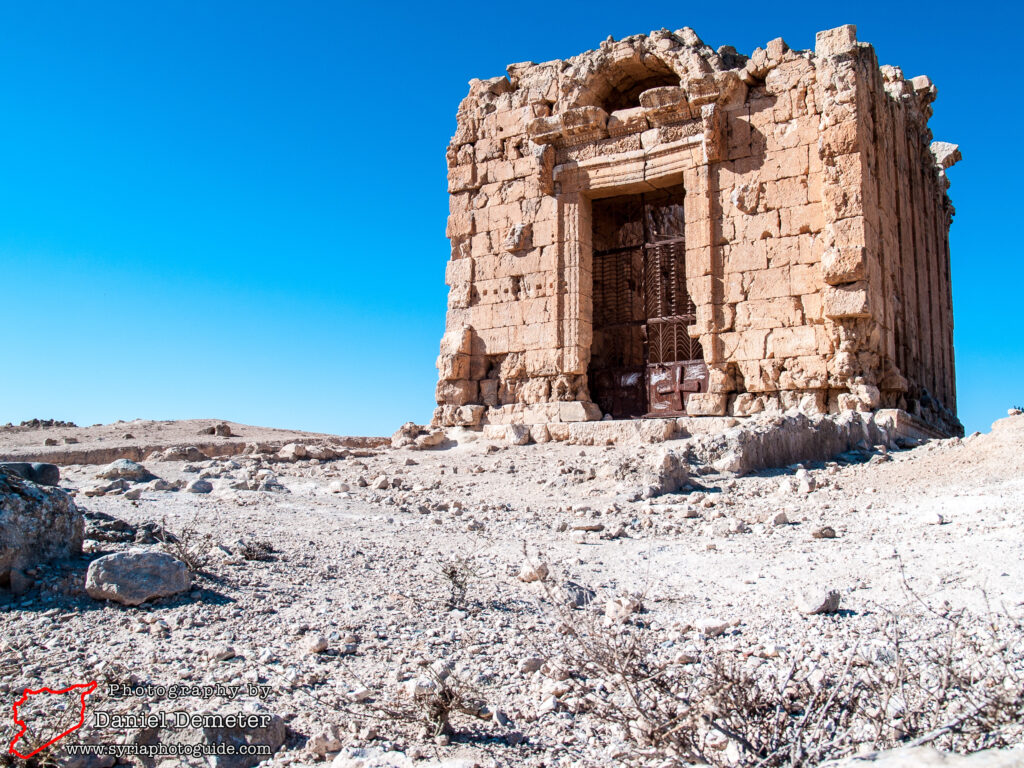
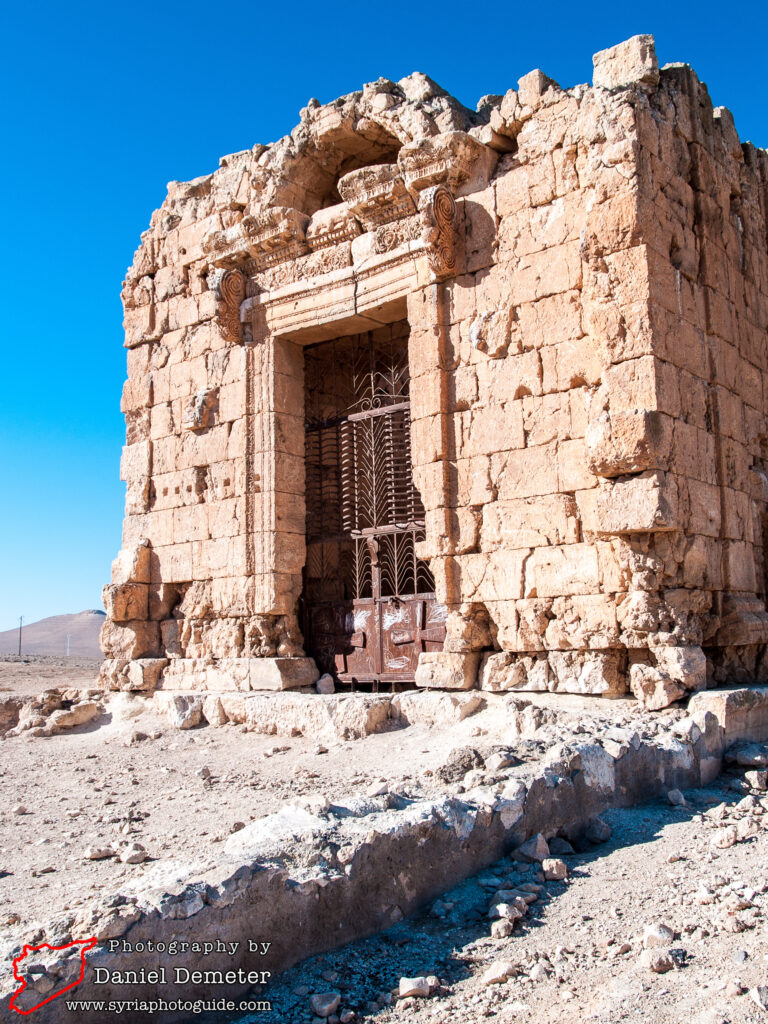
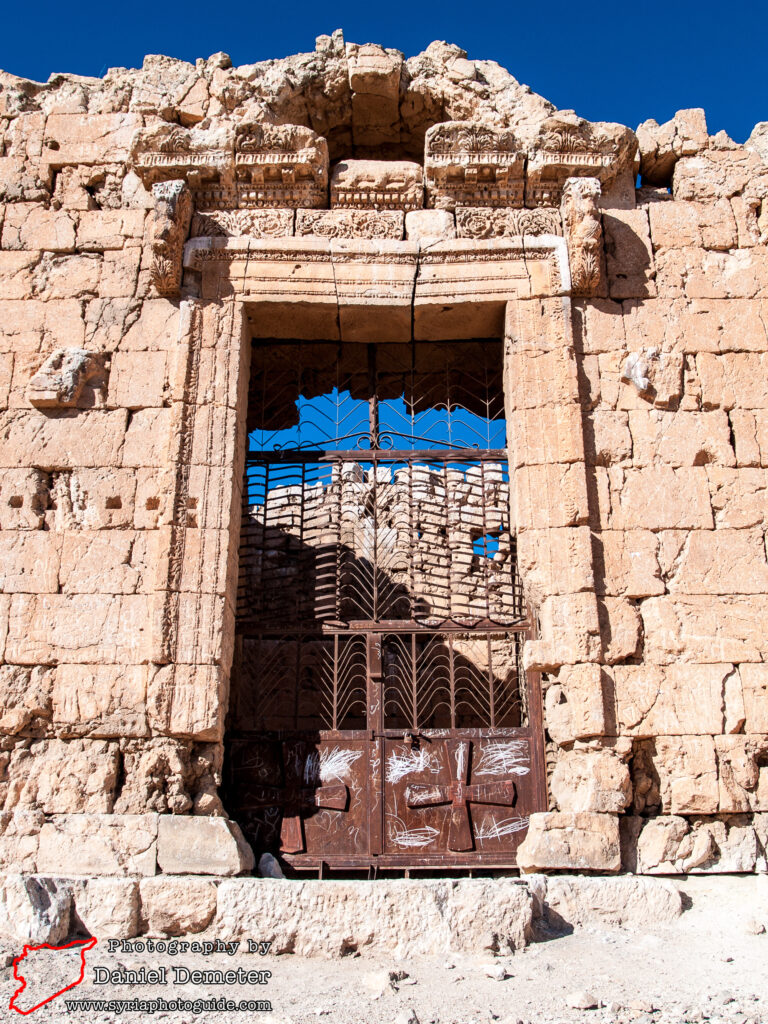
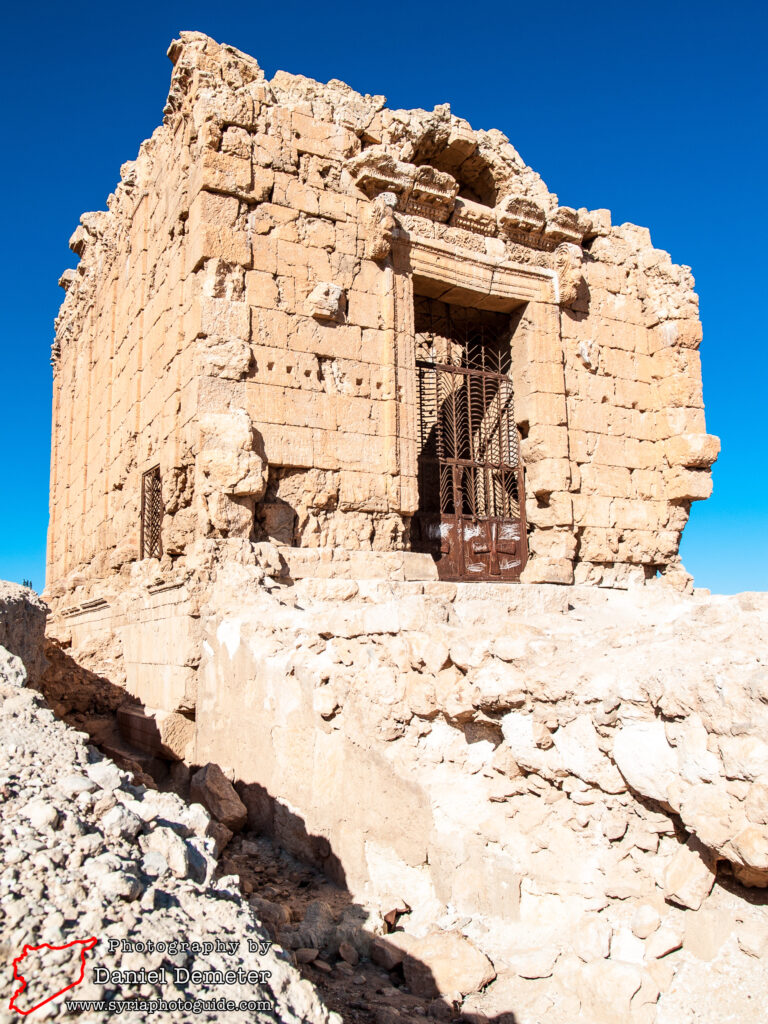
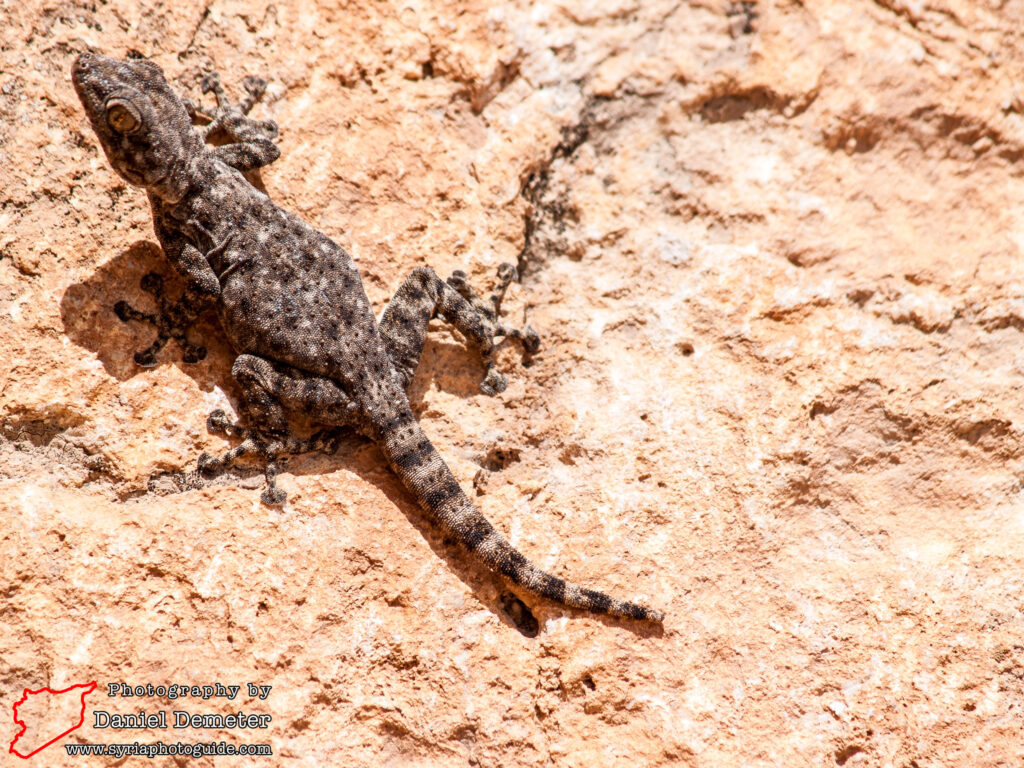
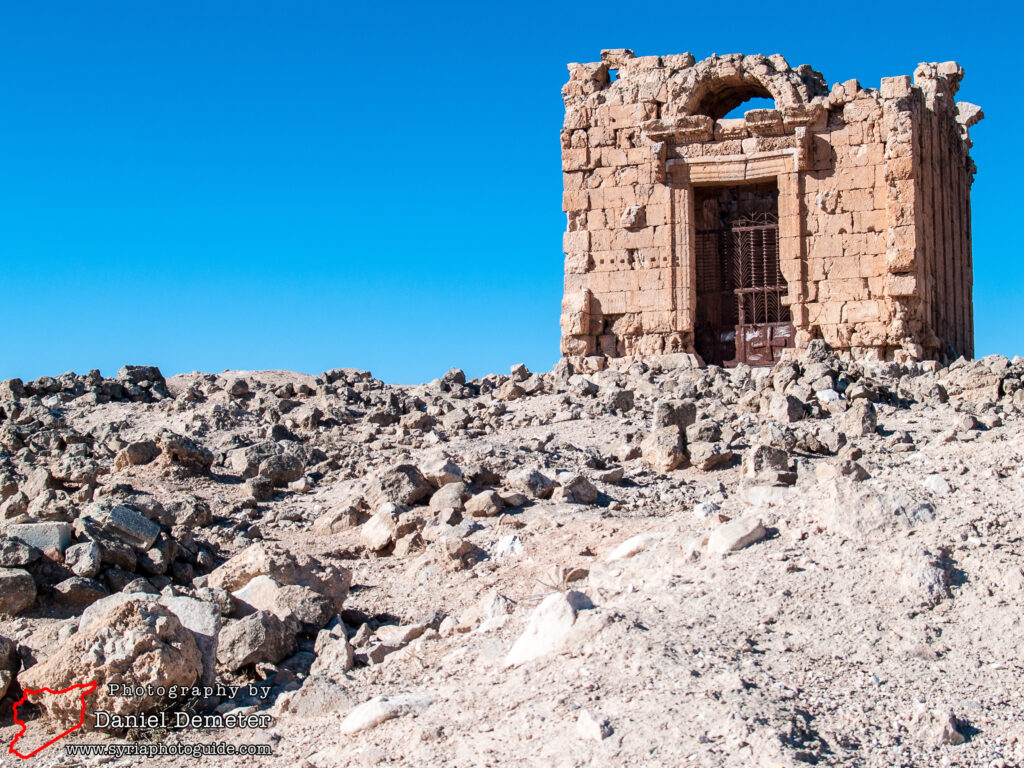
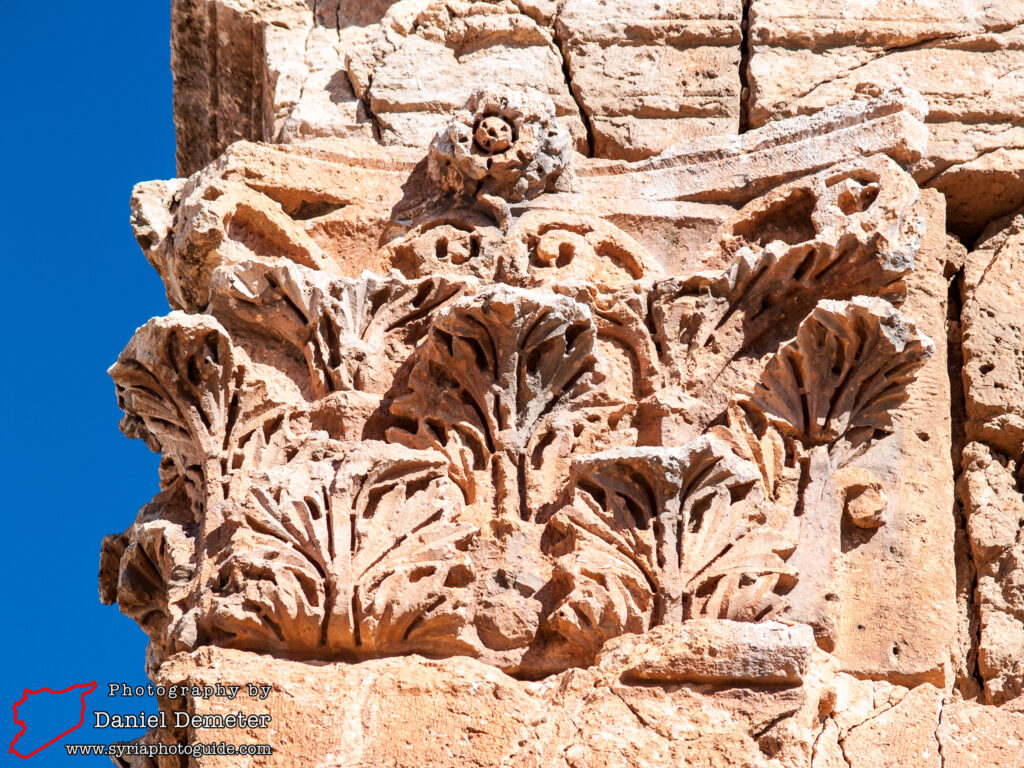
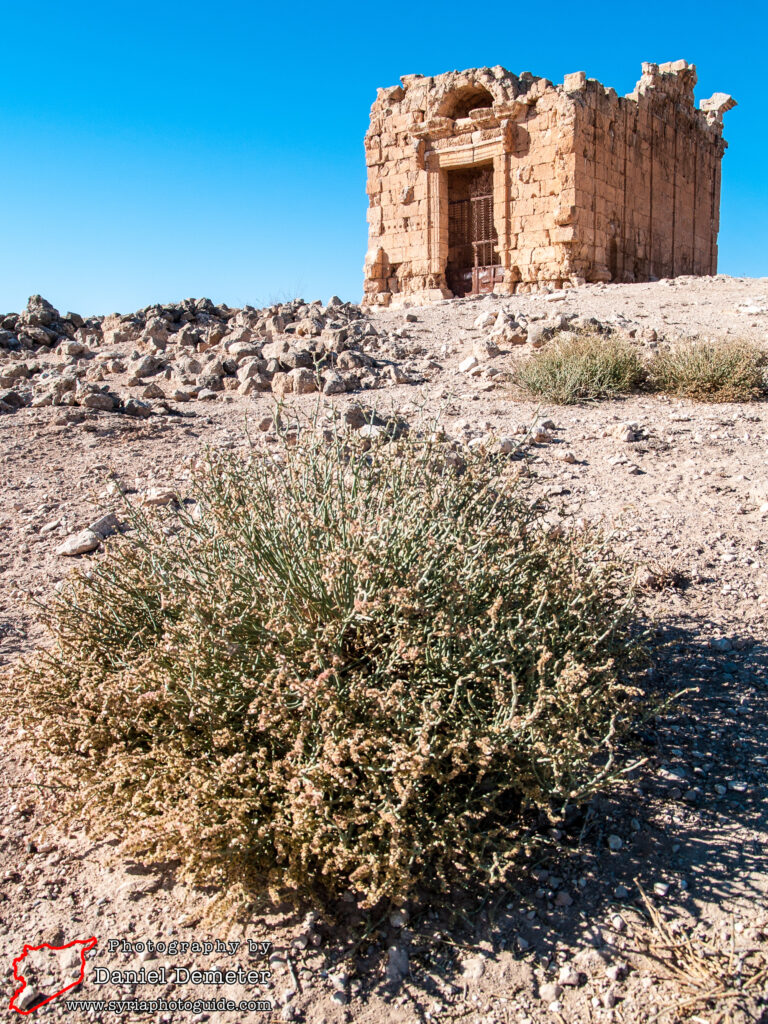
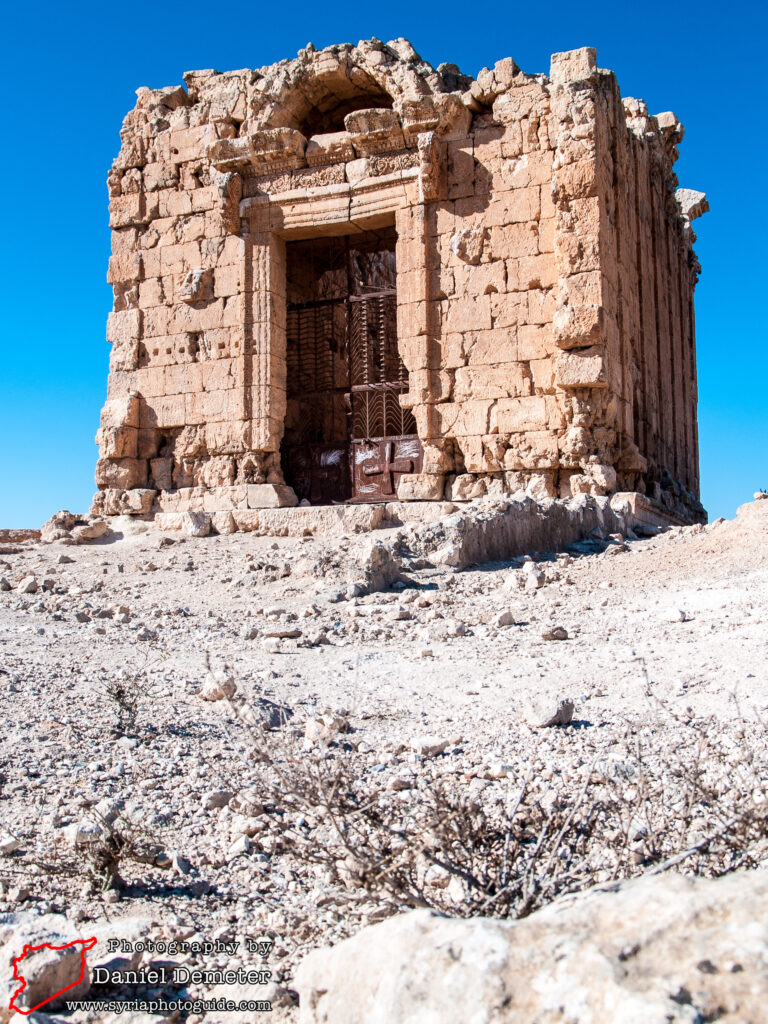
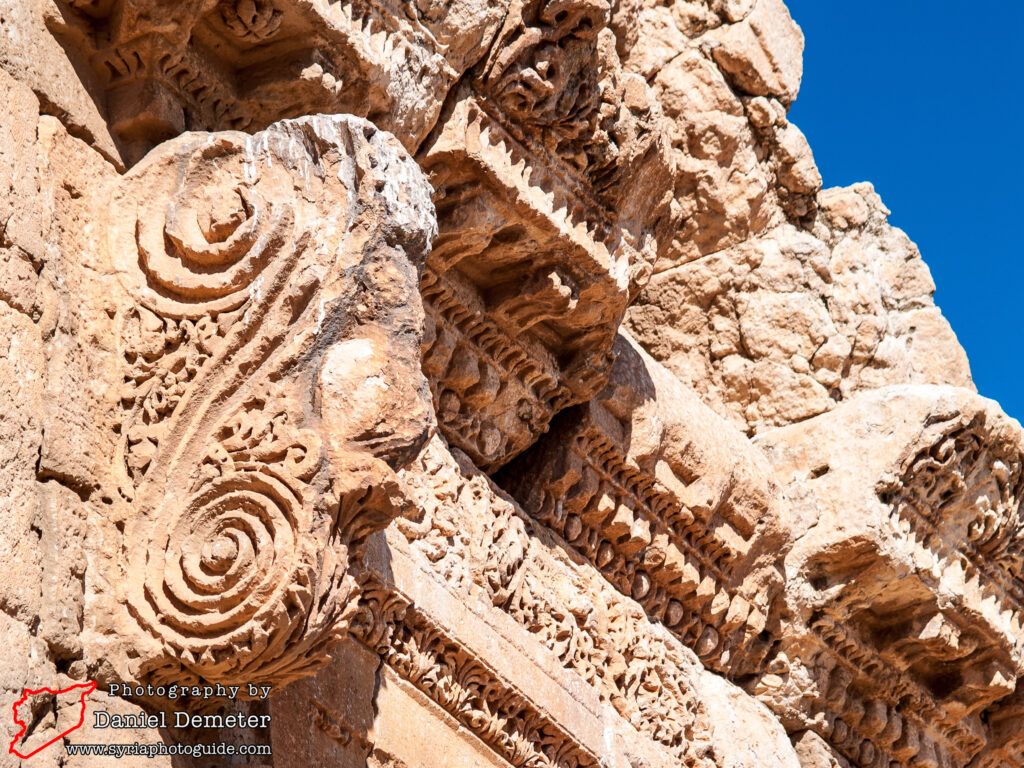
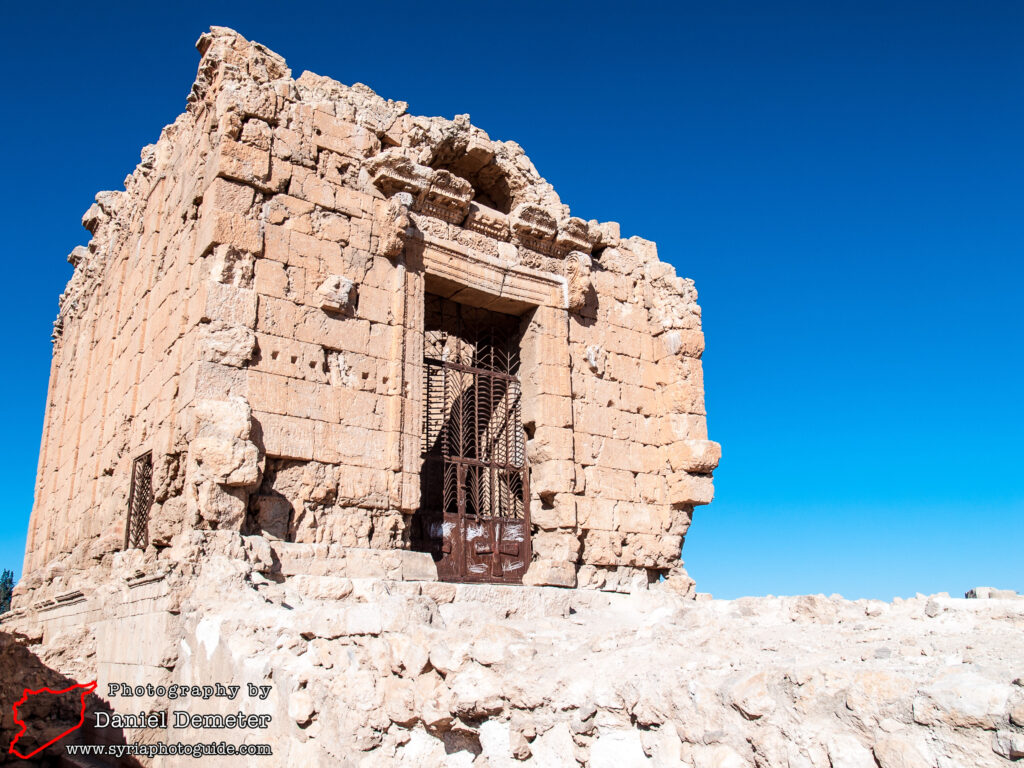
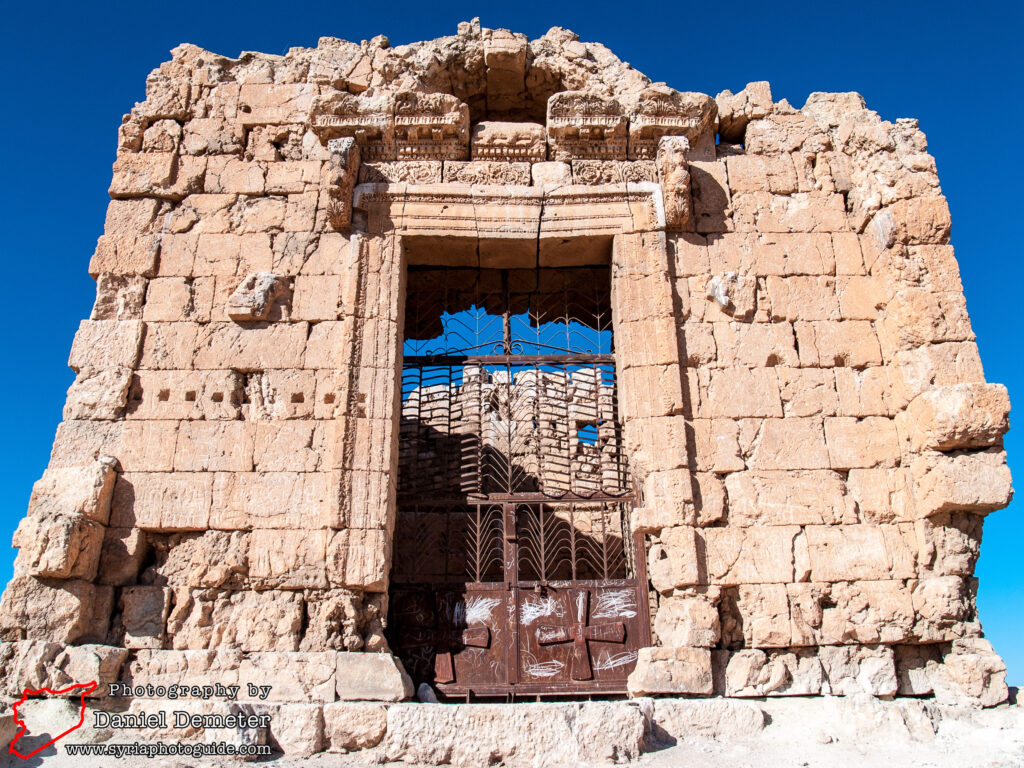
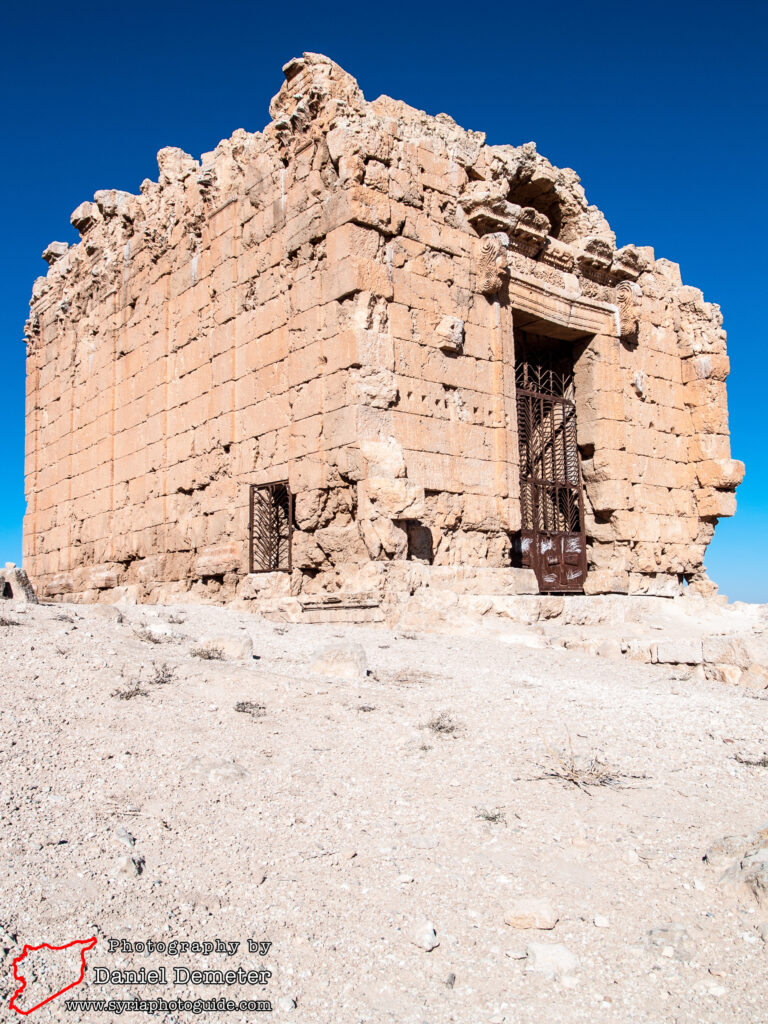
Getting There: The challenge of getting to and from Ithriya (اثريا) will deter most from attempting to visit without their own transportation. There are somewhat frequent buses between al-Raqqa (الرقة) and Homs (حمص) which pass by here via Salamiyeh (سلمية), but practically none of them will stop to pick up passengers.
Some of them, however, are willing to drop off passengers, making it easier to get to Ithriya (اثريا) than it is to return. If you want to attempt a visit using public transportation, get an early start. The company that runs the morning bus from Salamiyeh (سلمية) to al-Raqqa (الرقة) doesn’t seem to mind dropping passengers here, but expect to pay nearly the full fare. The trip takes a little over an hour from Salamiyeh (سلمية).
One or two bus companies make a stop at the cafe/snack shop along the highway in Ithriya (اثريا), so this is the best place to wait for return (or onward) transportation. Hitchhiking would probably be a better option, however. The locals often hitchhike in this region, and most of them would be willing to give you a lift. There is little traffic on this highway, however. This is an isolated area, and it is not recommended that women attempt to visit this site alone.
Coordinates: 35°21’57.44″N / 37°47’09.53″E
Transliteration Variants: Athriya, Athriyeh, Athriyah, Asriya, Asriyeh, Asriyah, Ithriyeh, Ithriyah, Isriya, Isriyeh, Isriyah
Rating: 5.5 / 10
